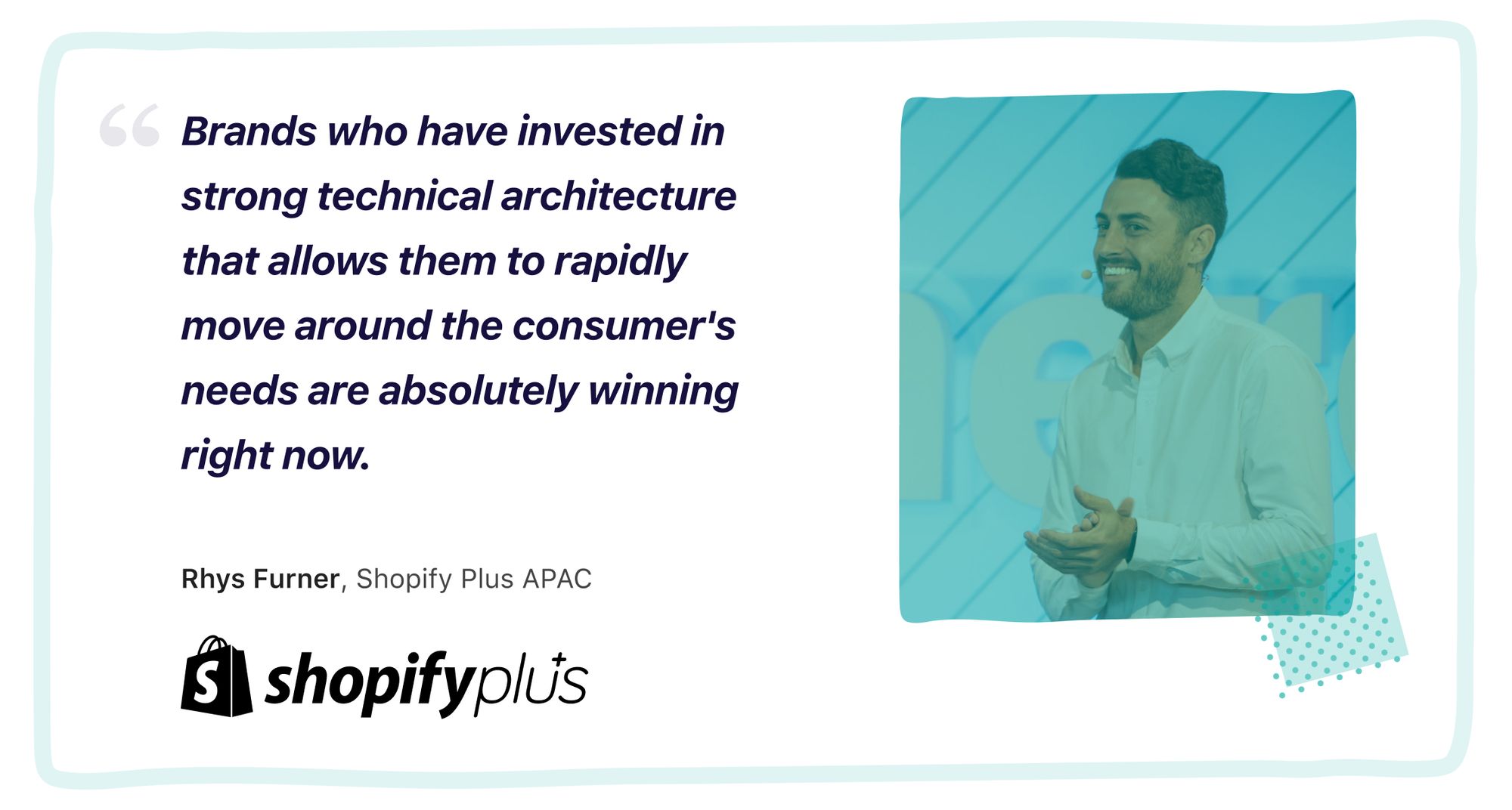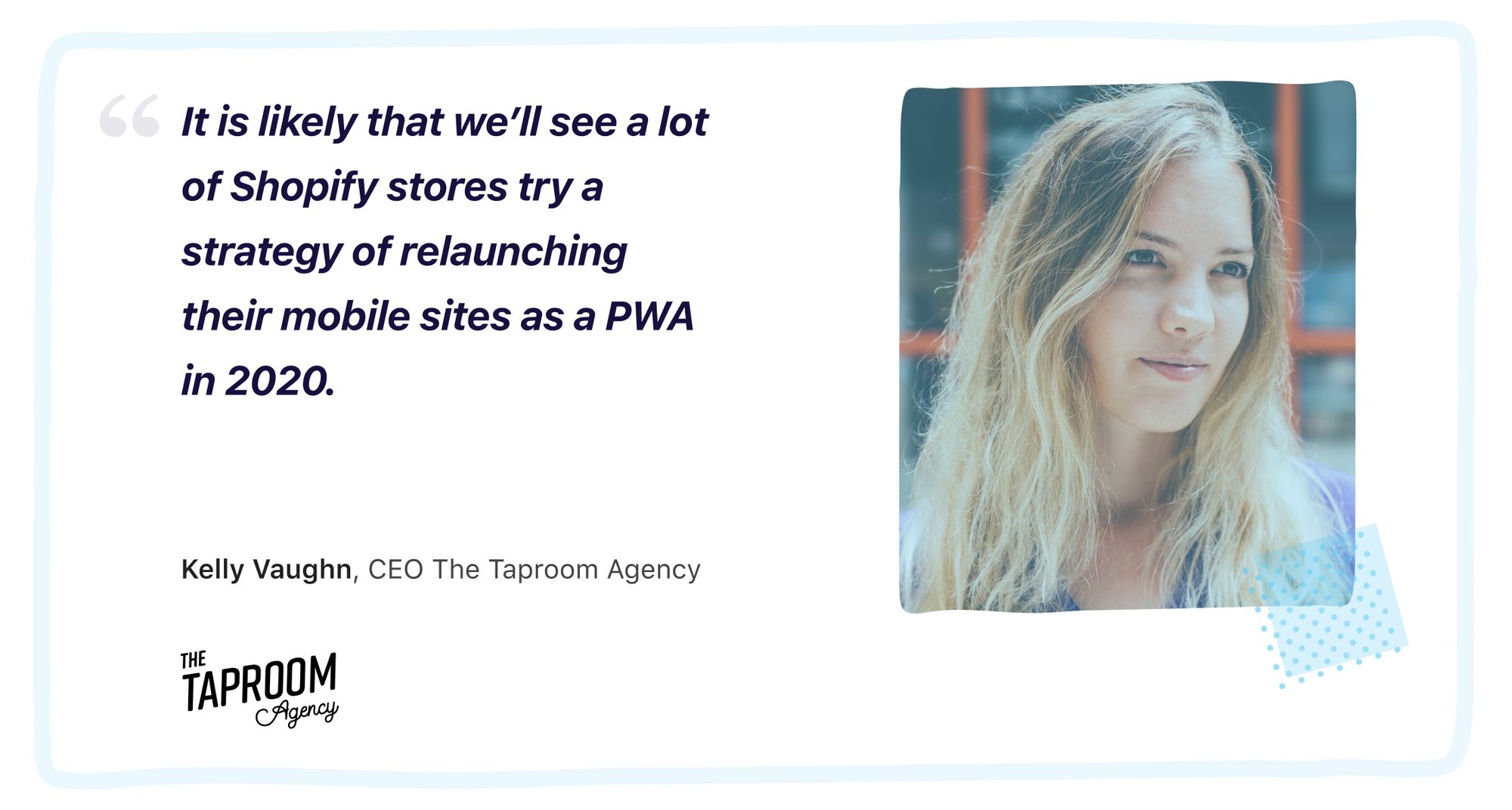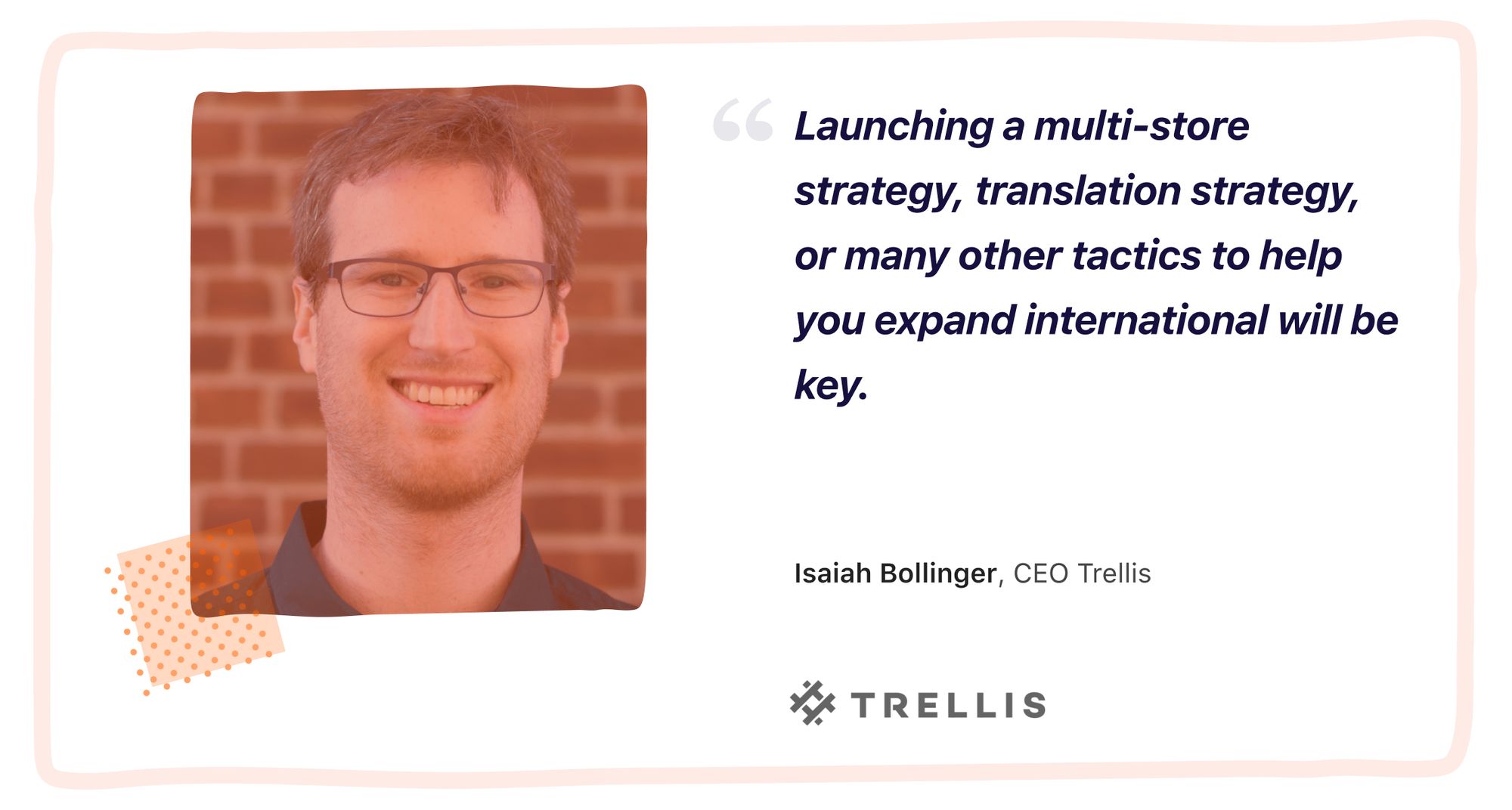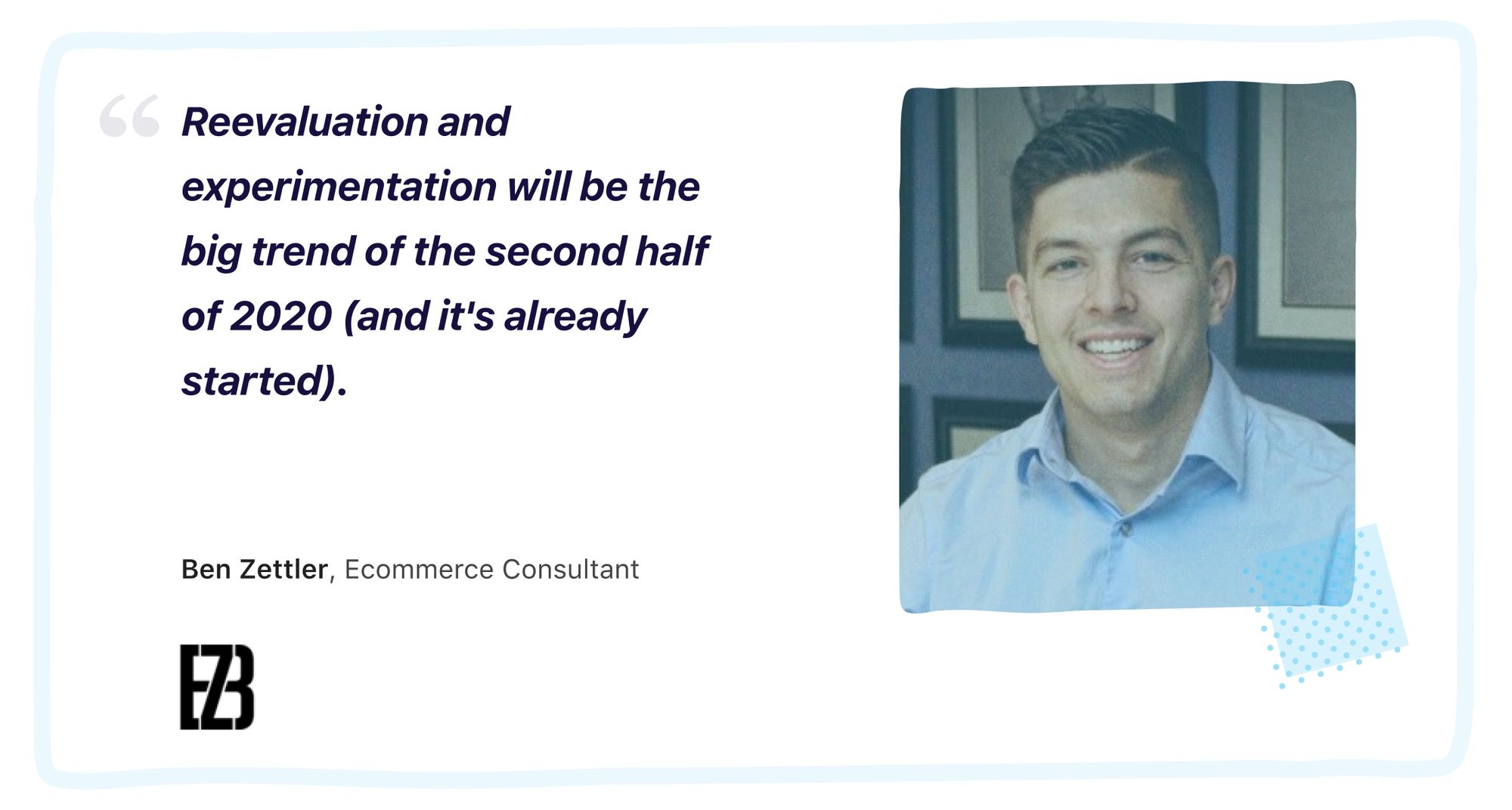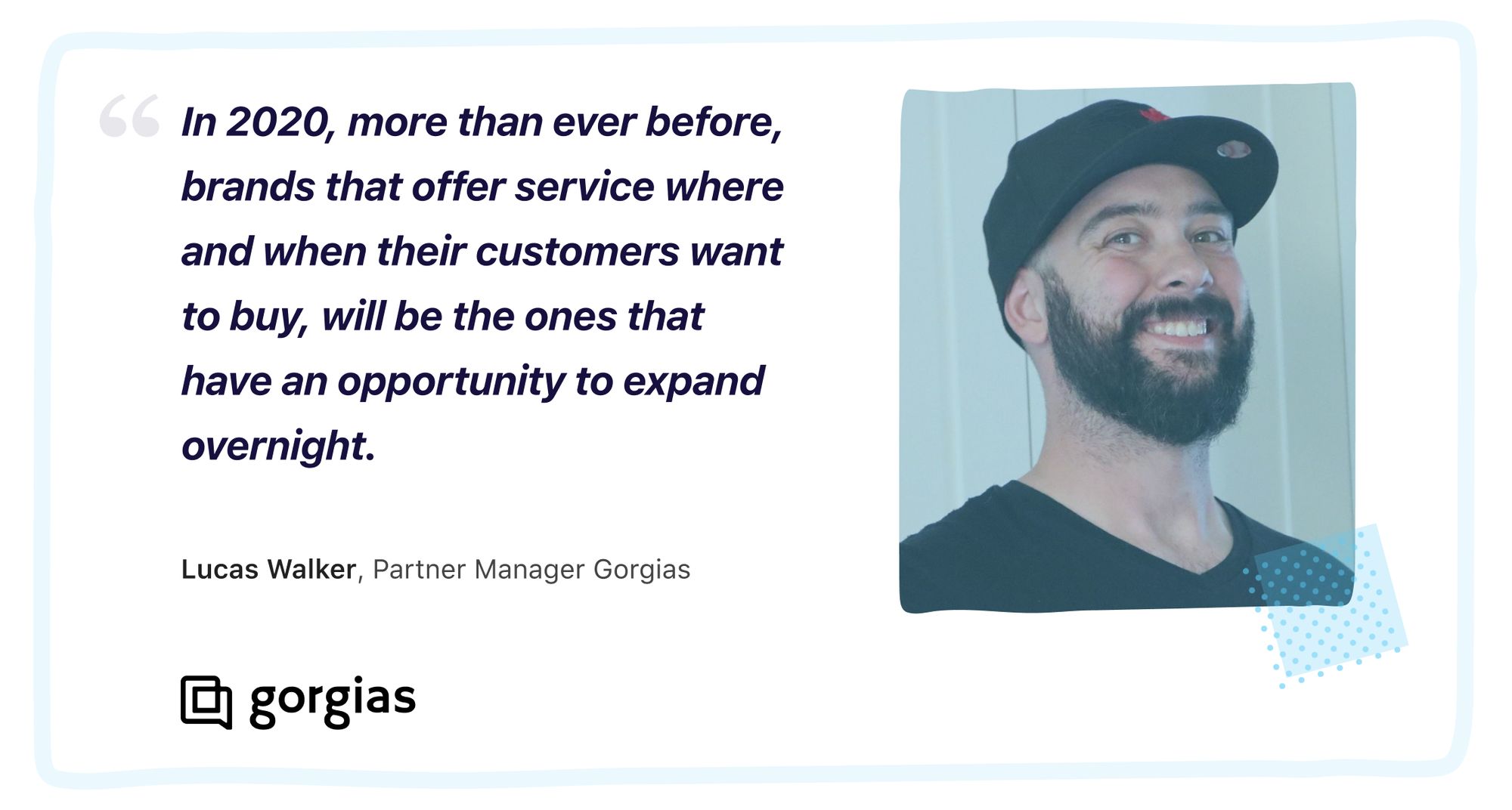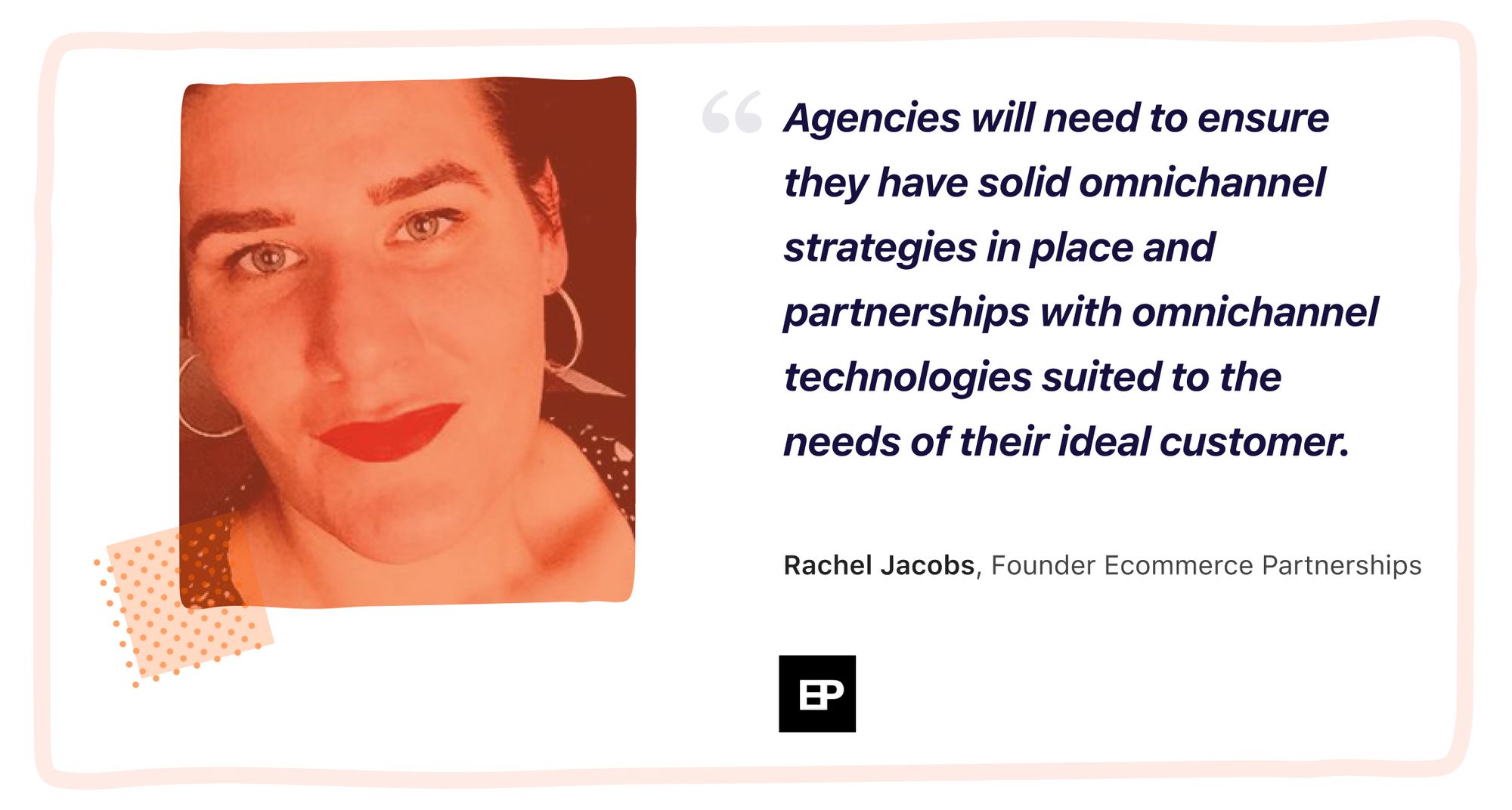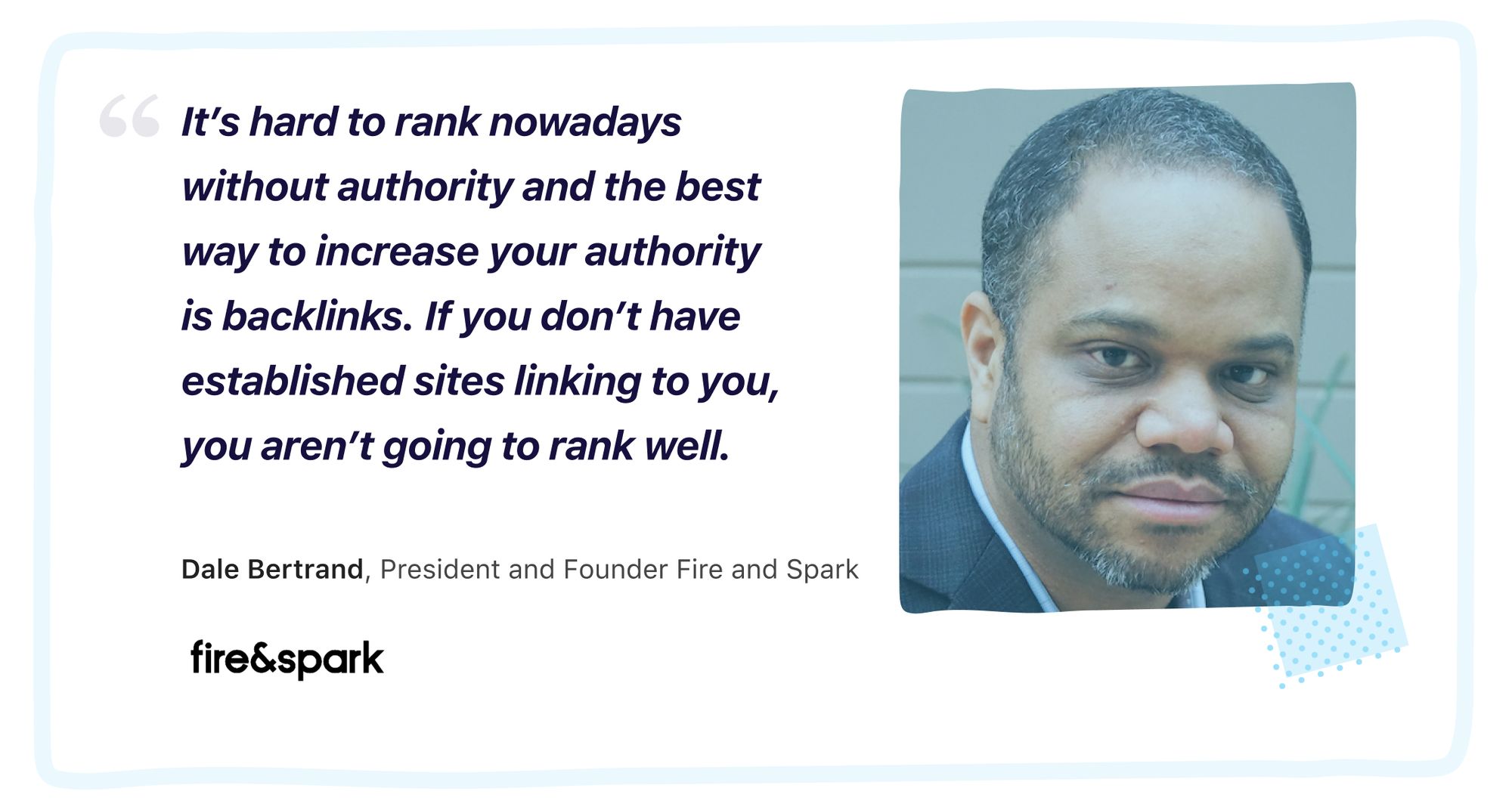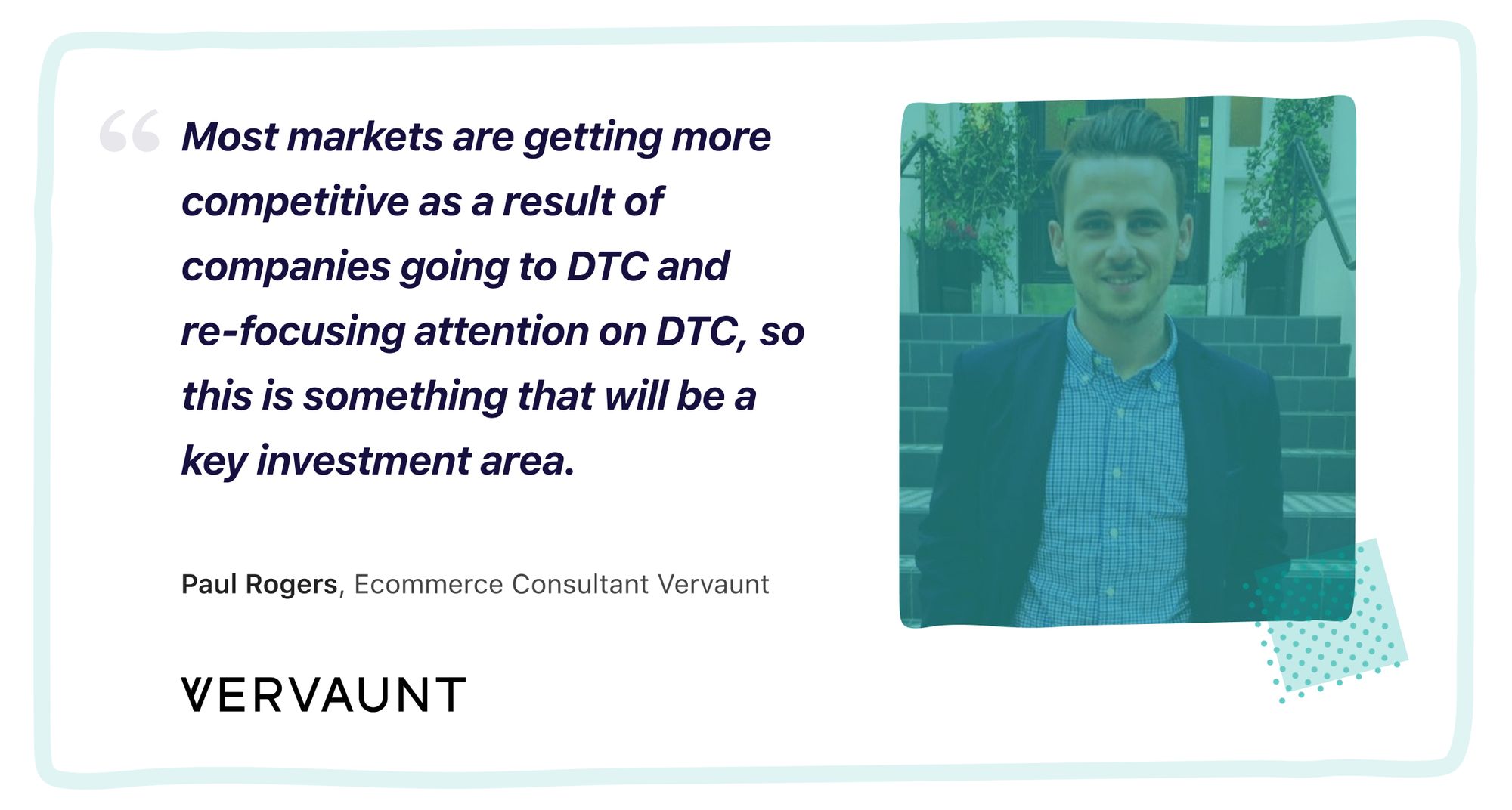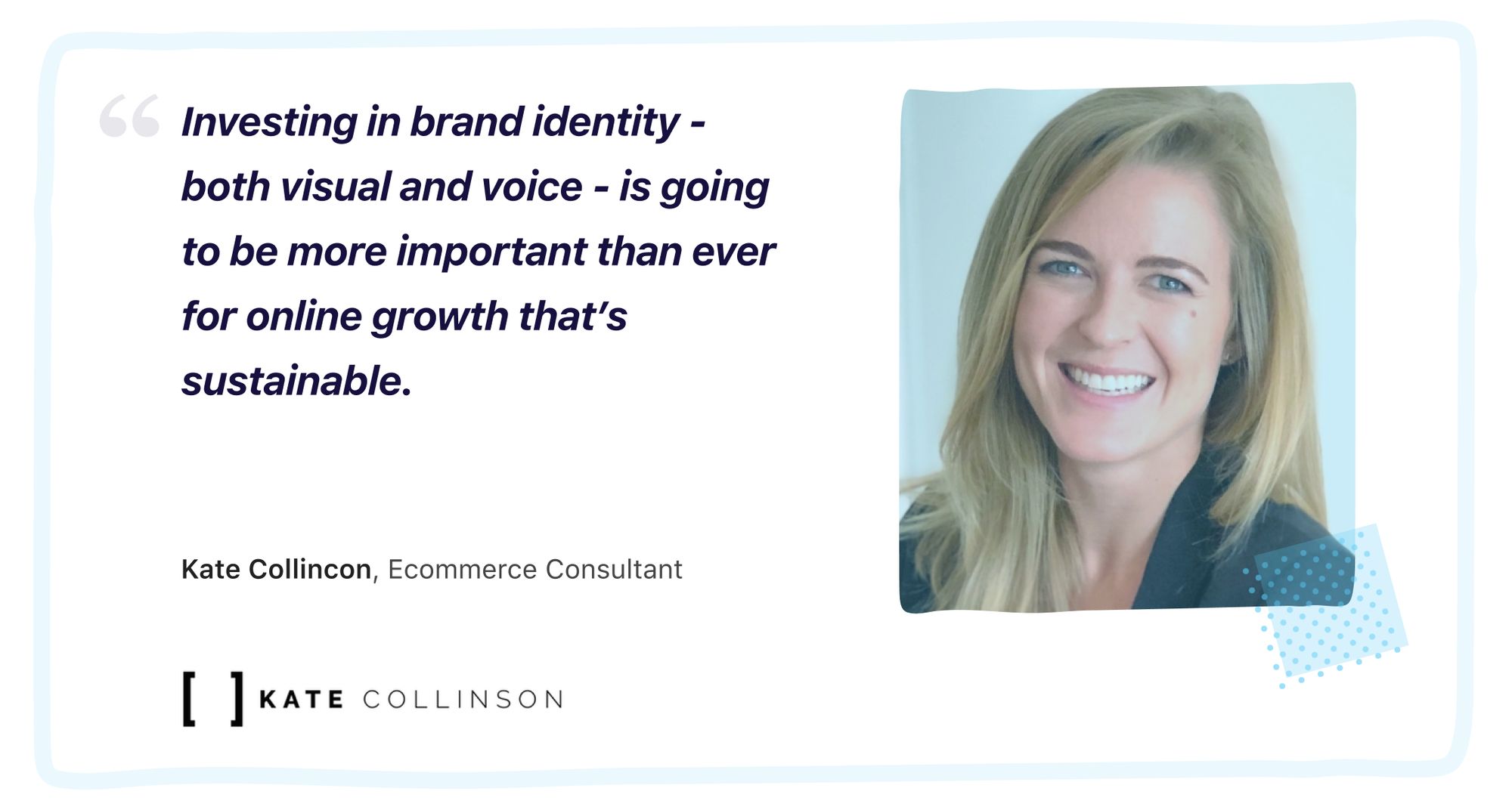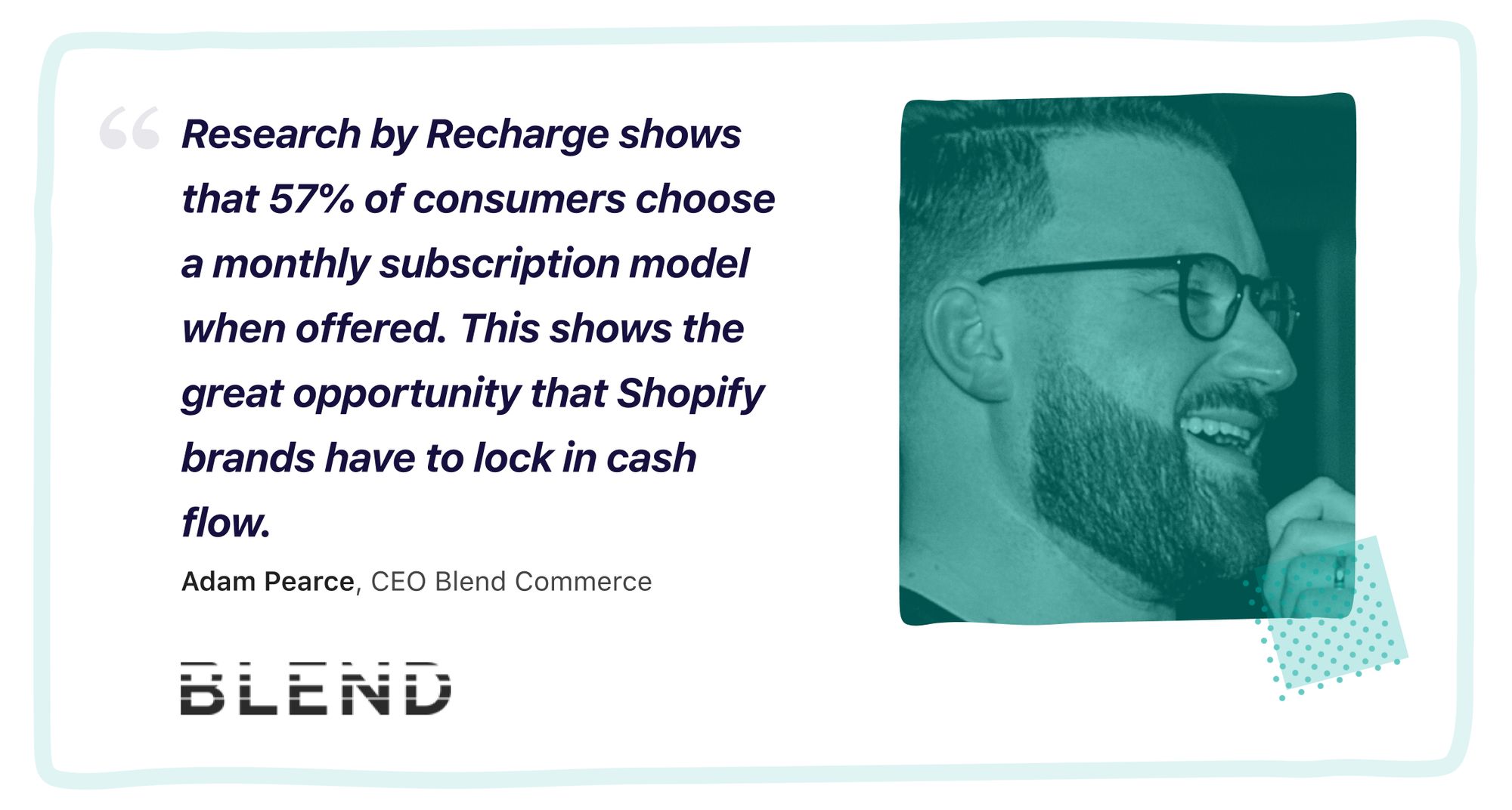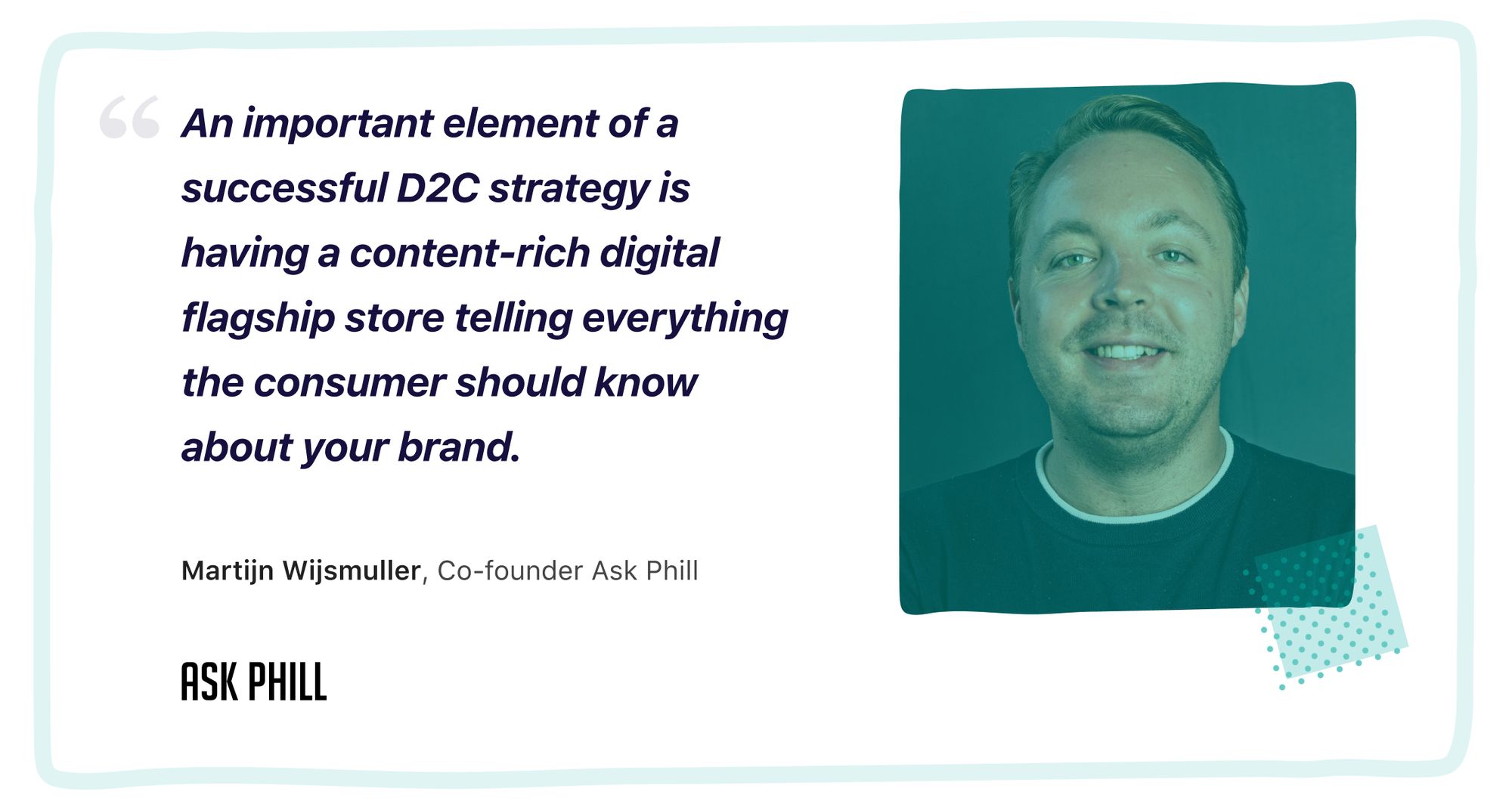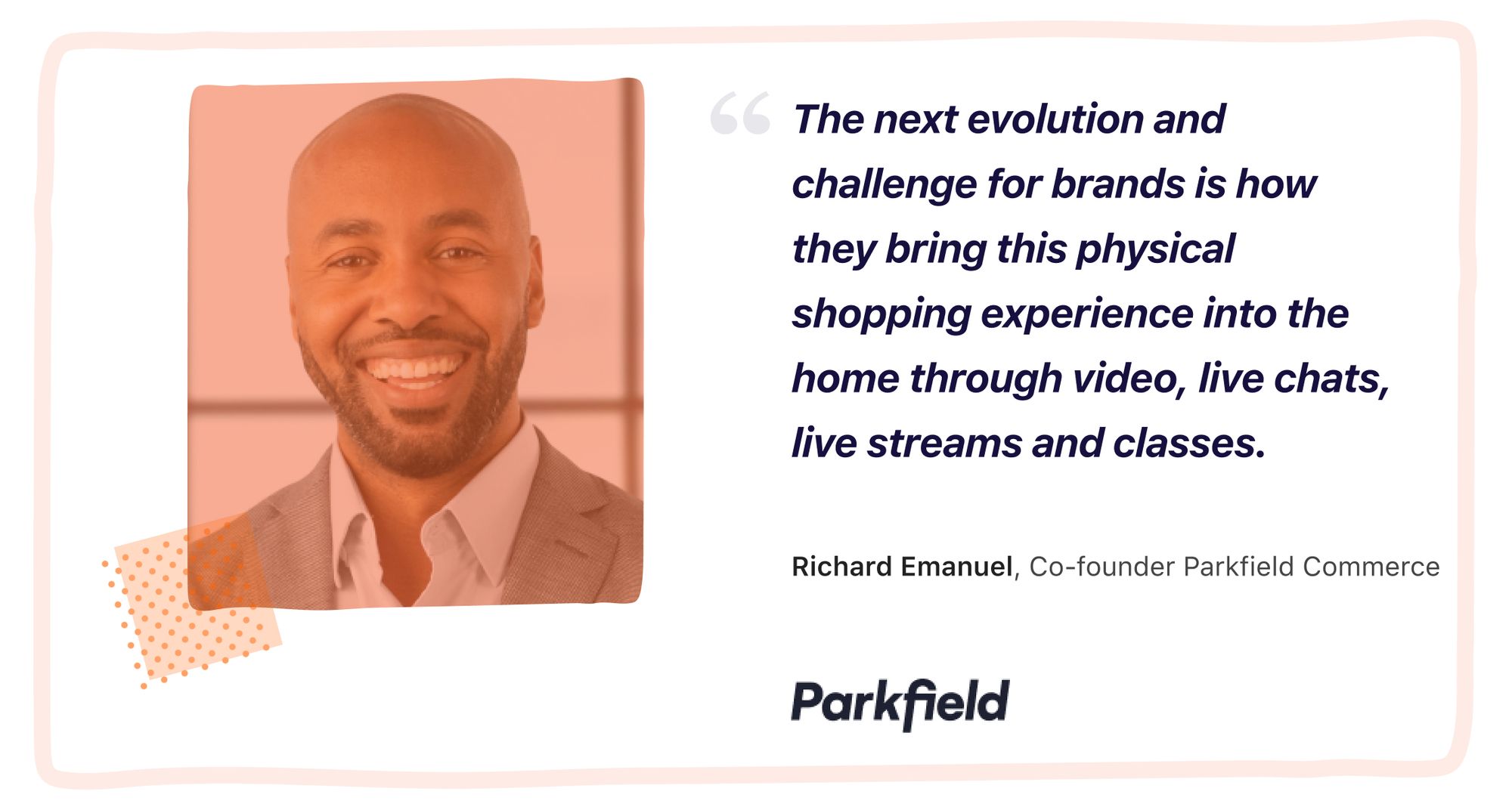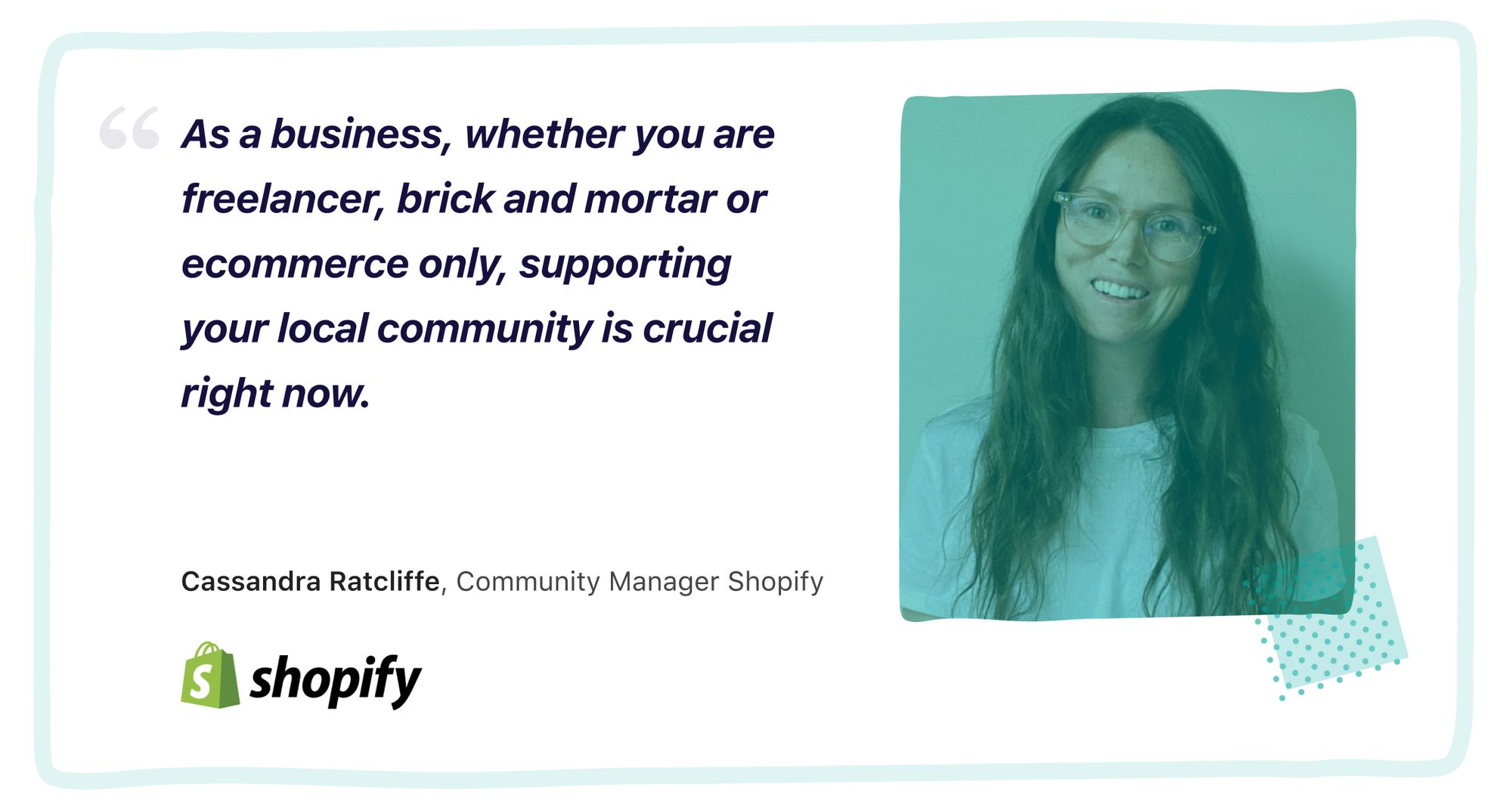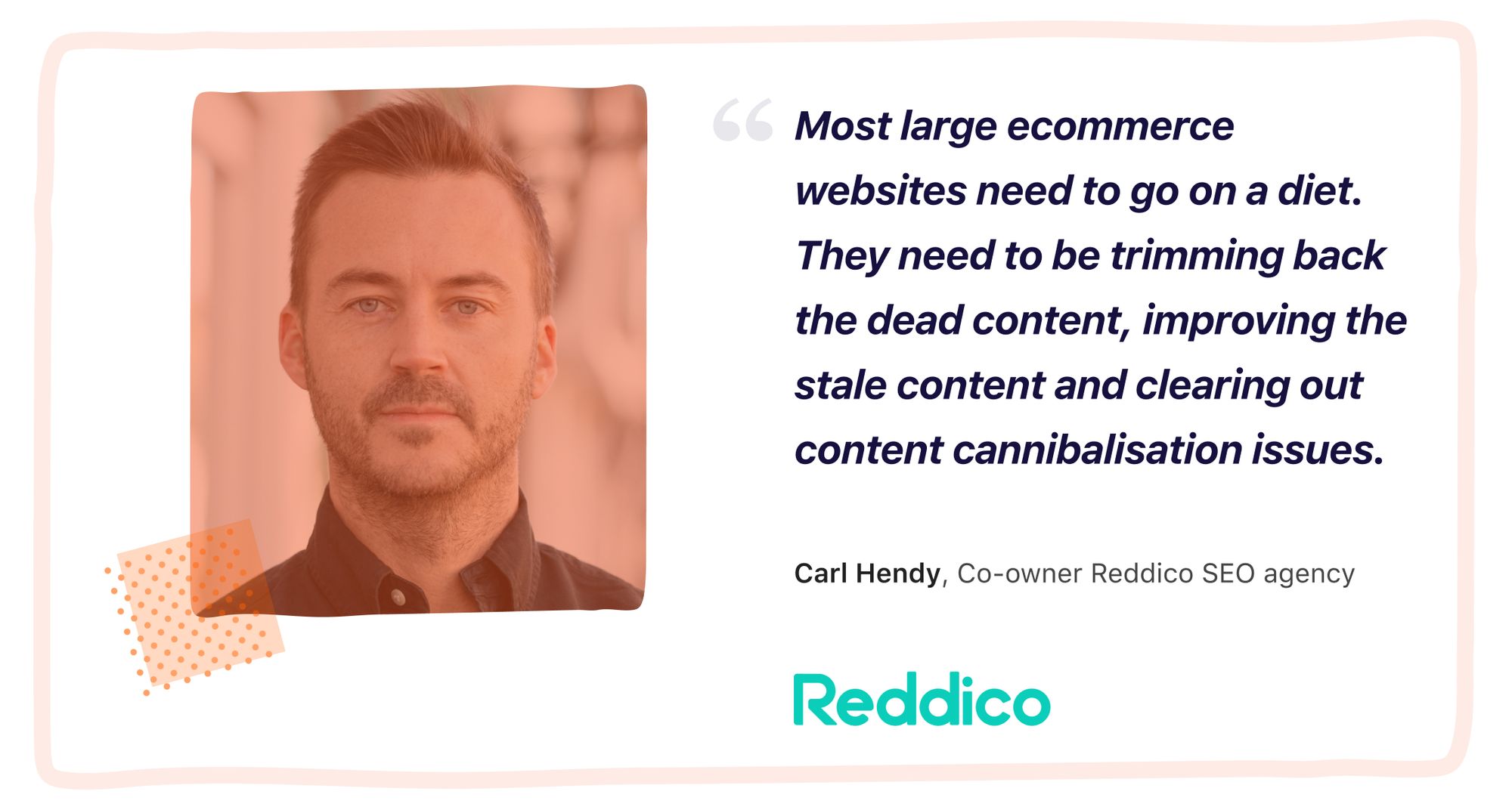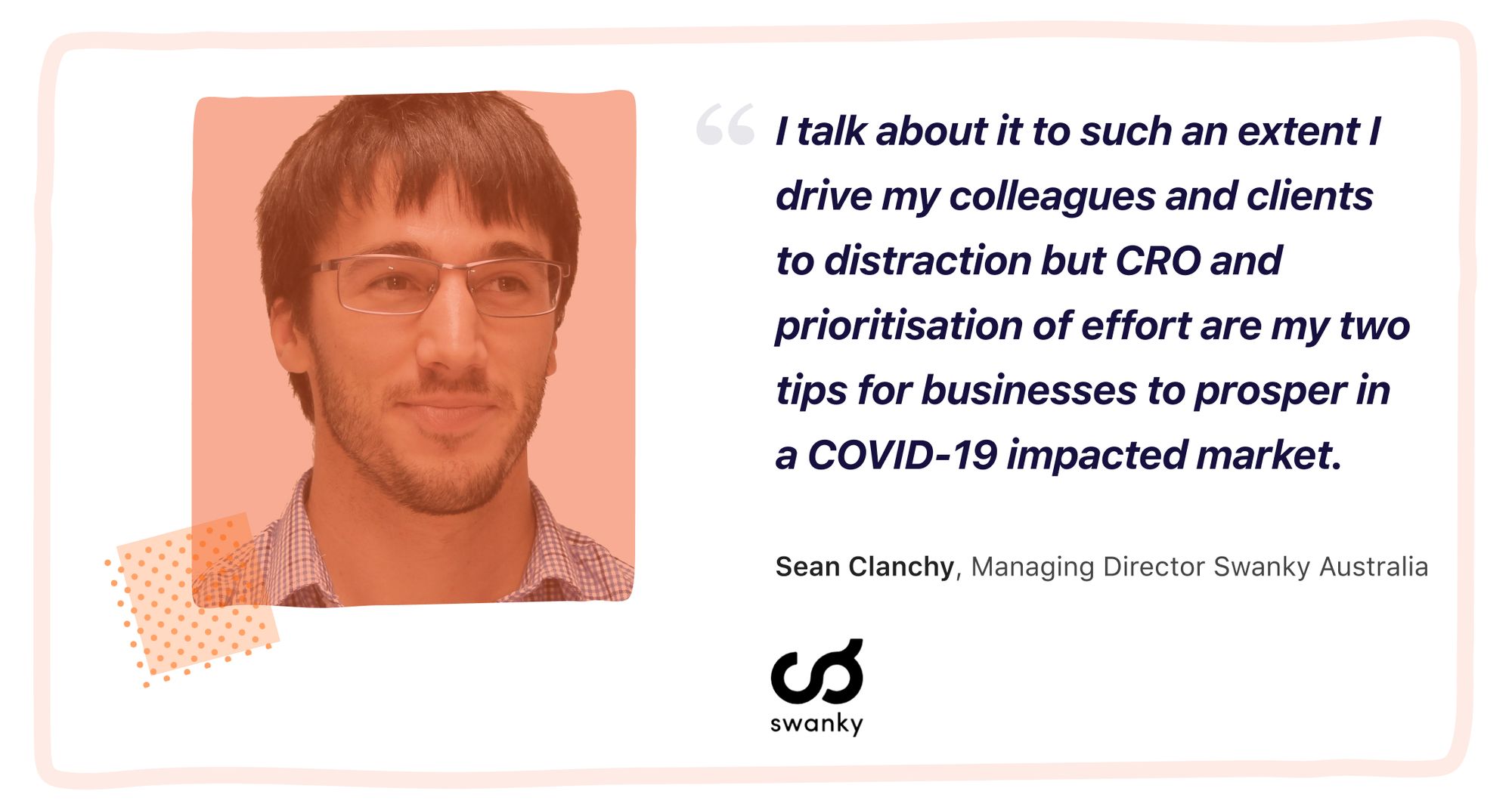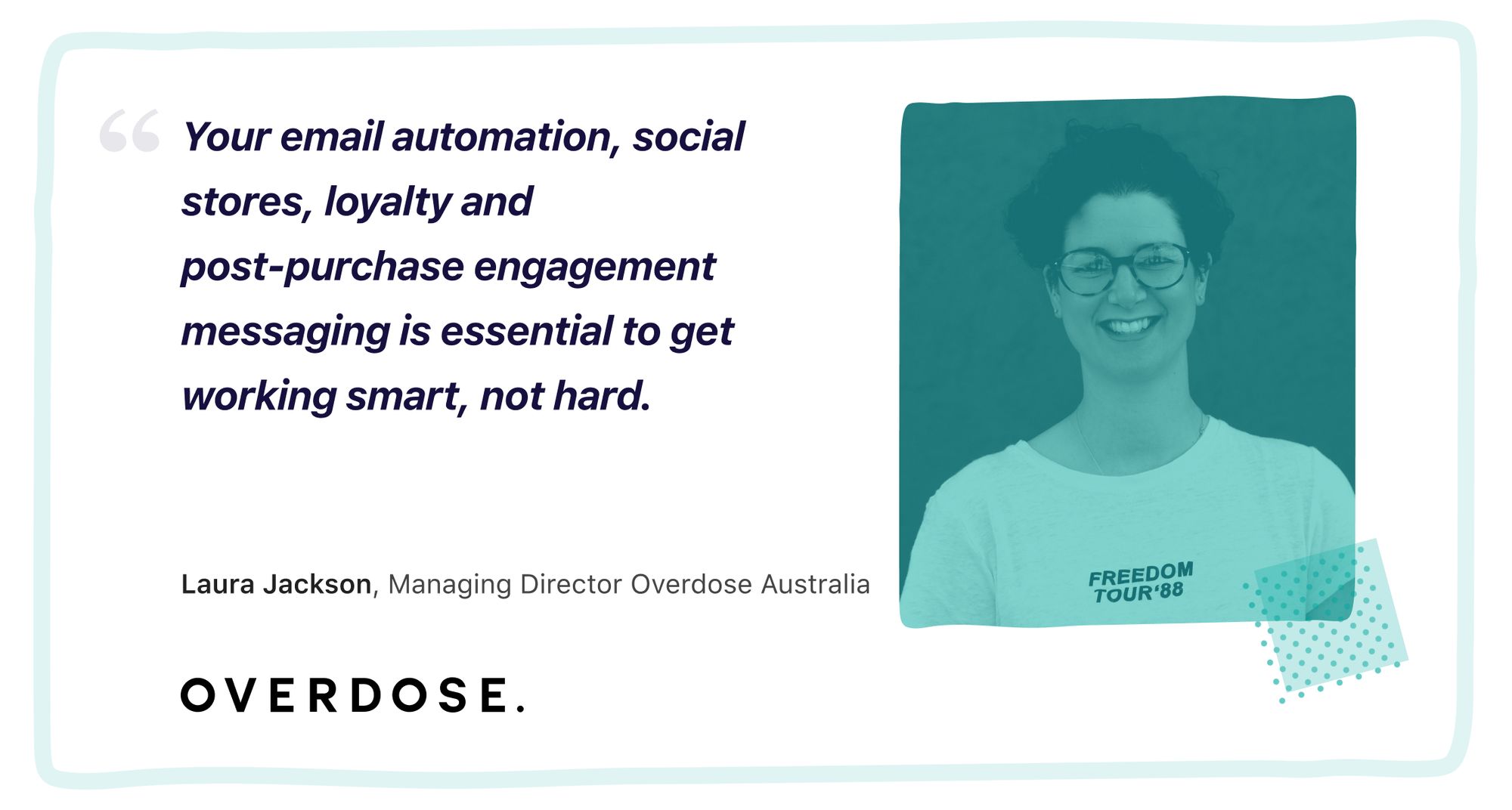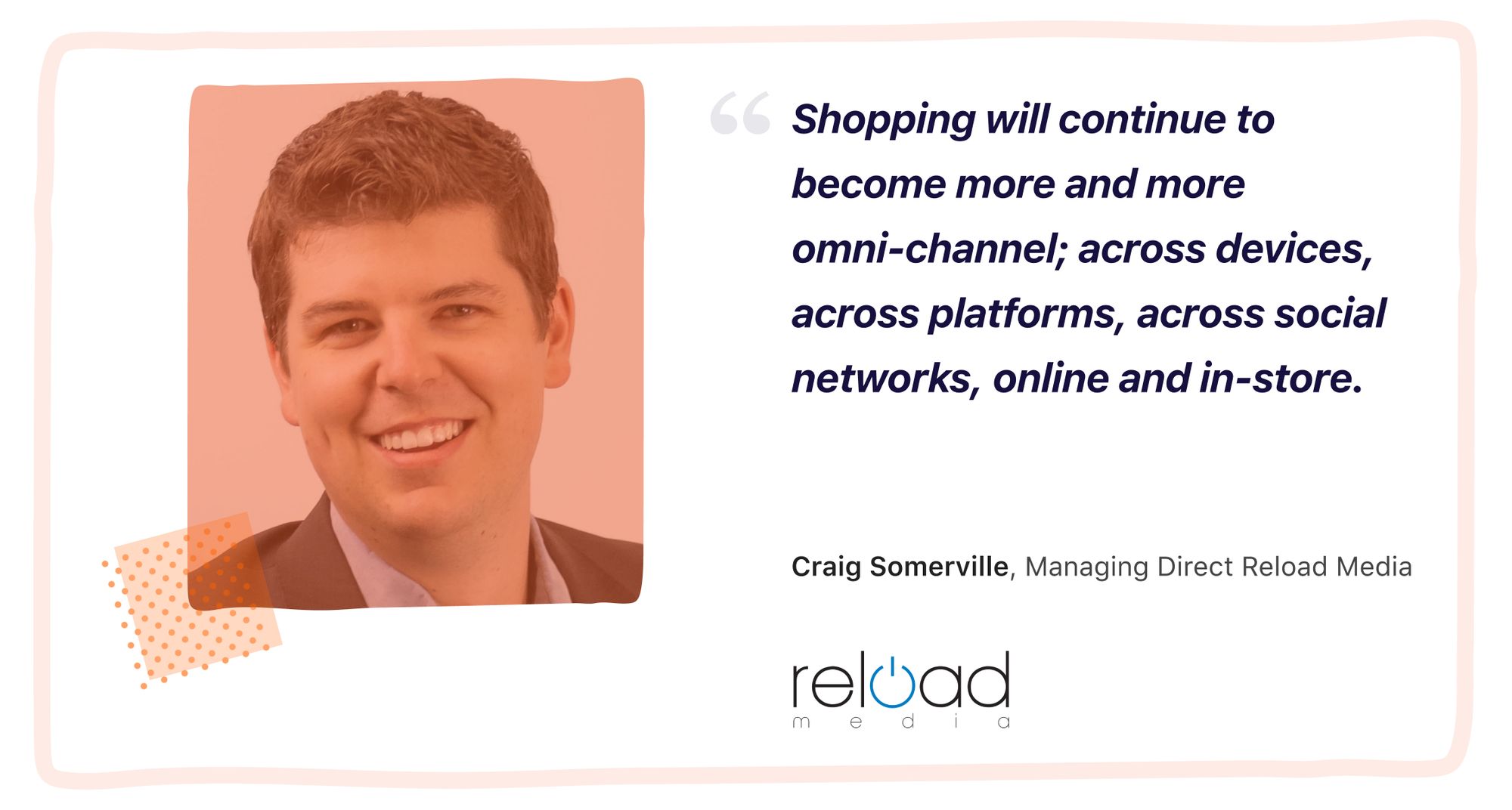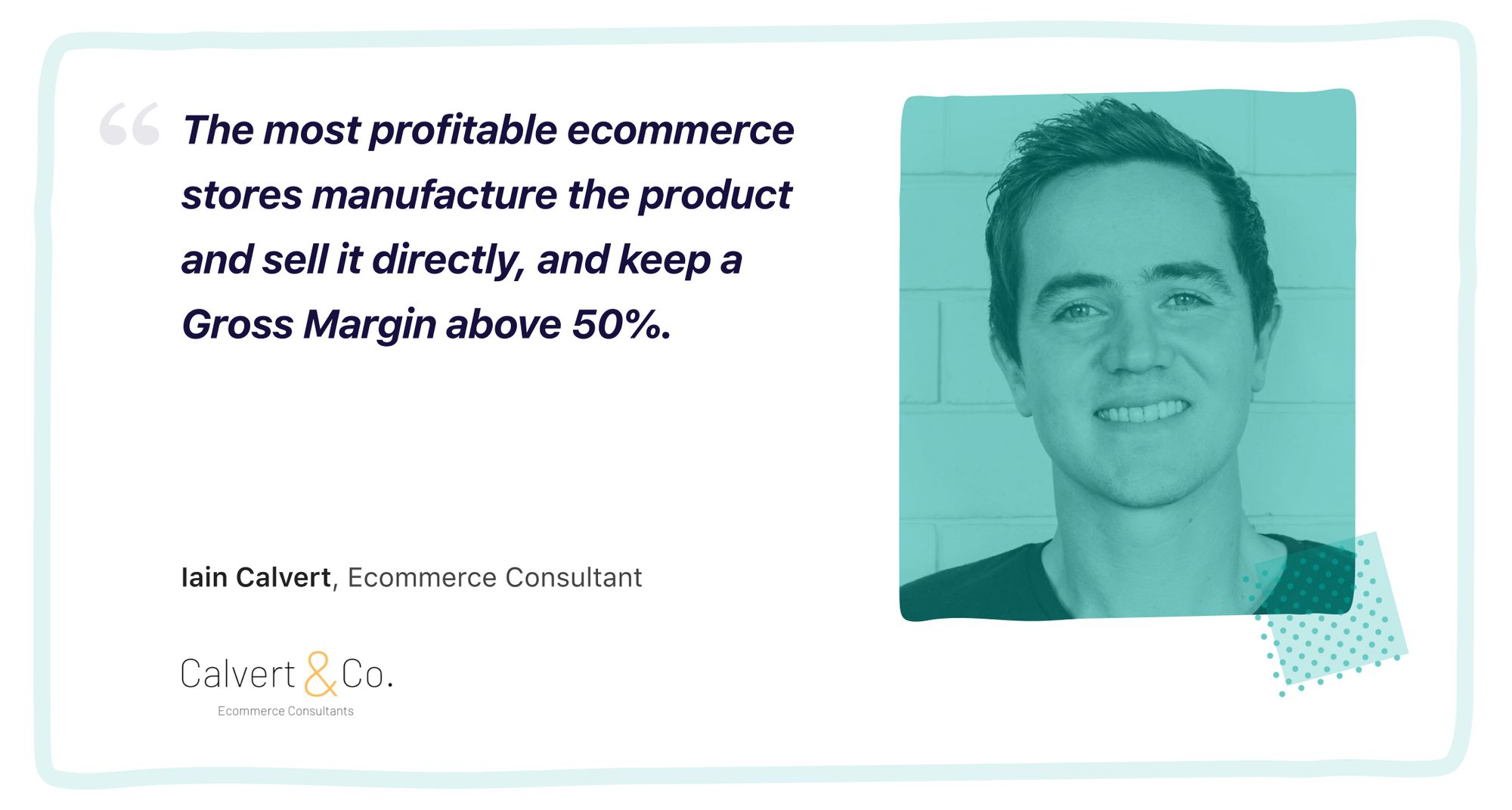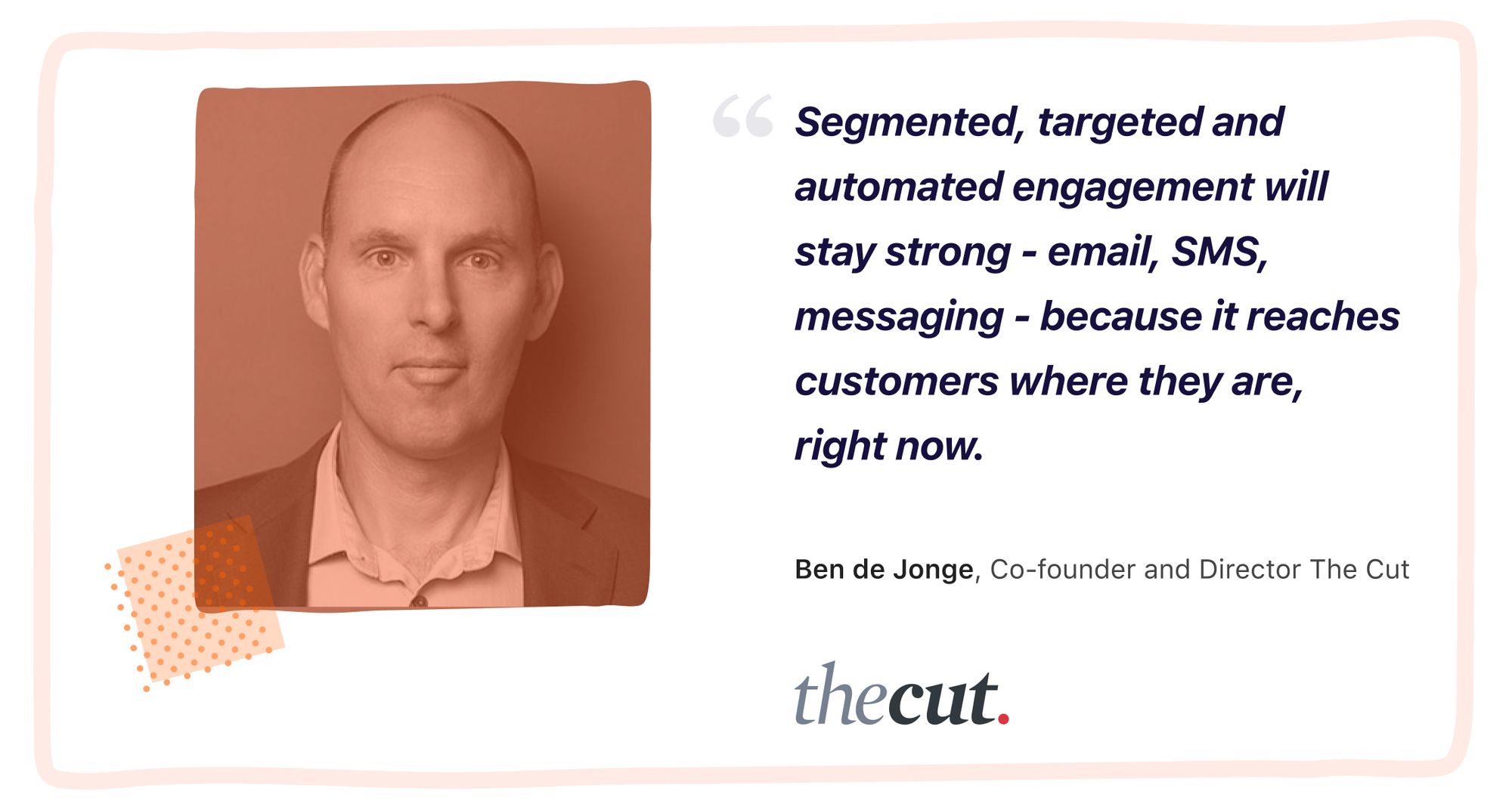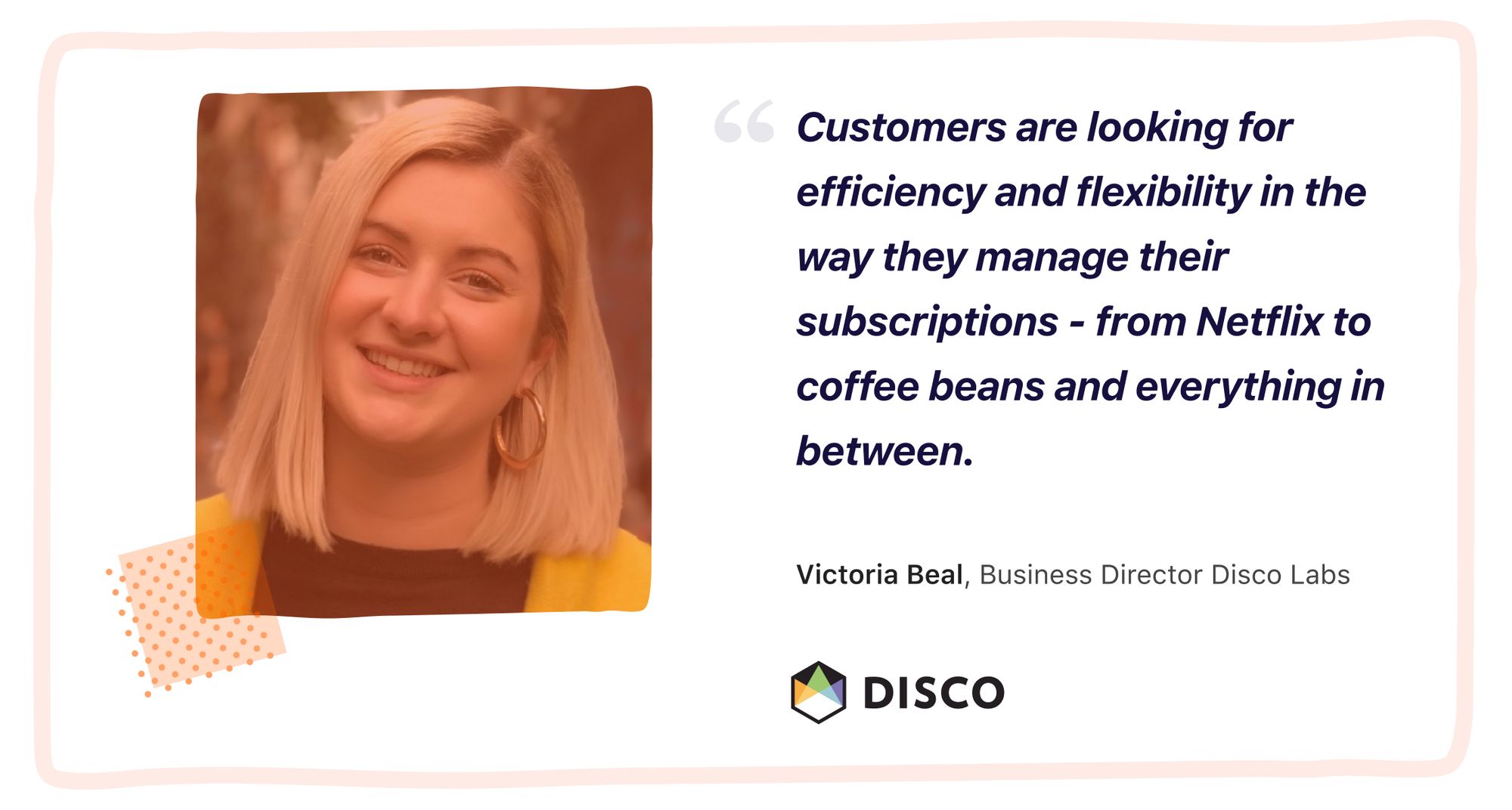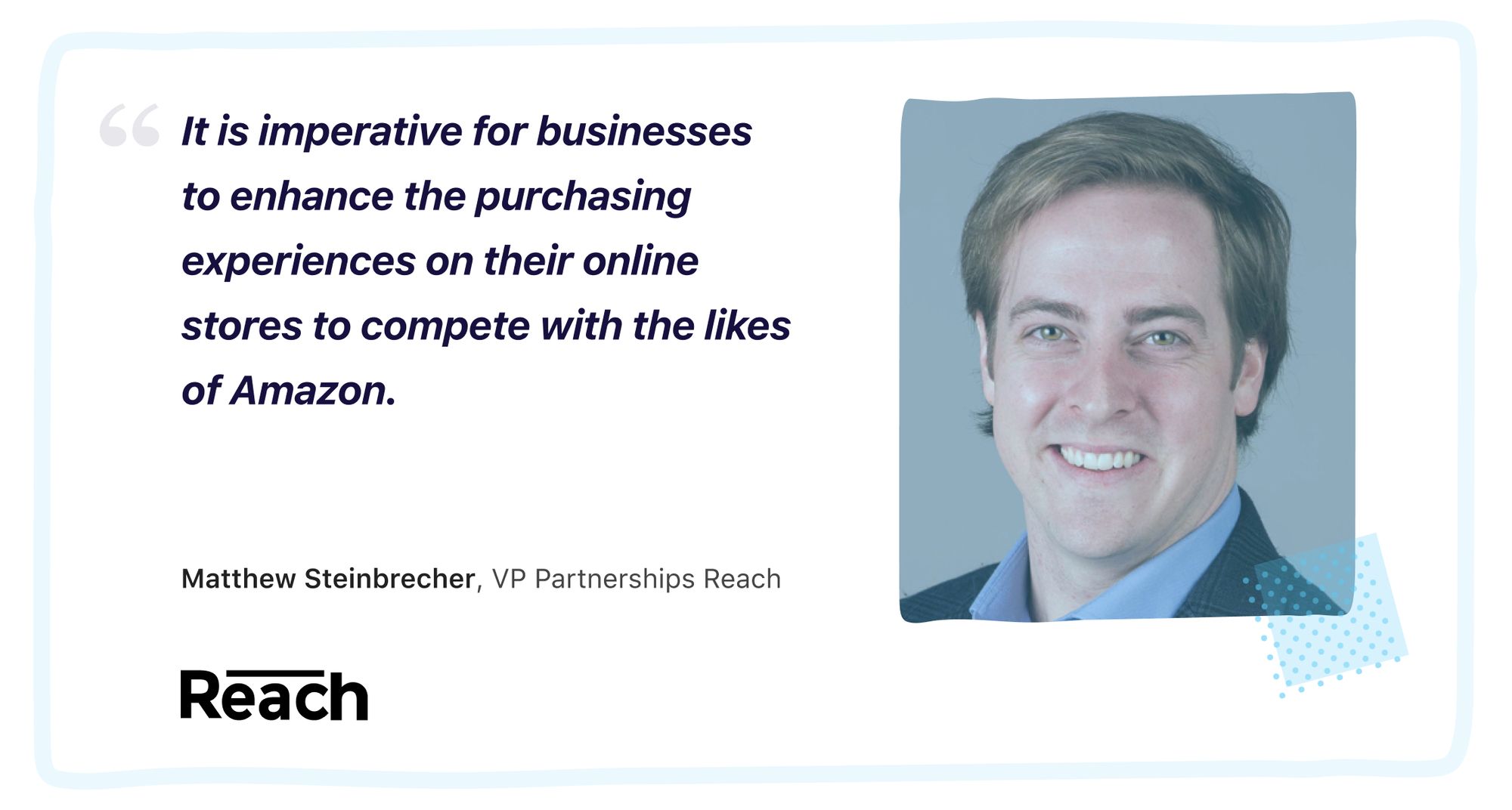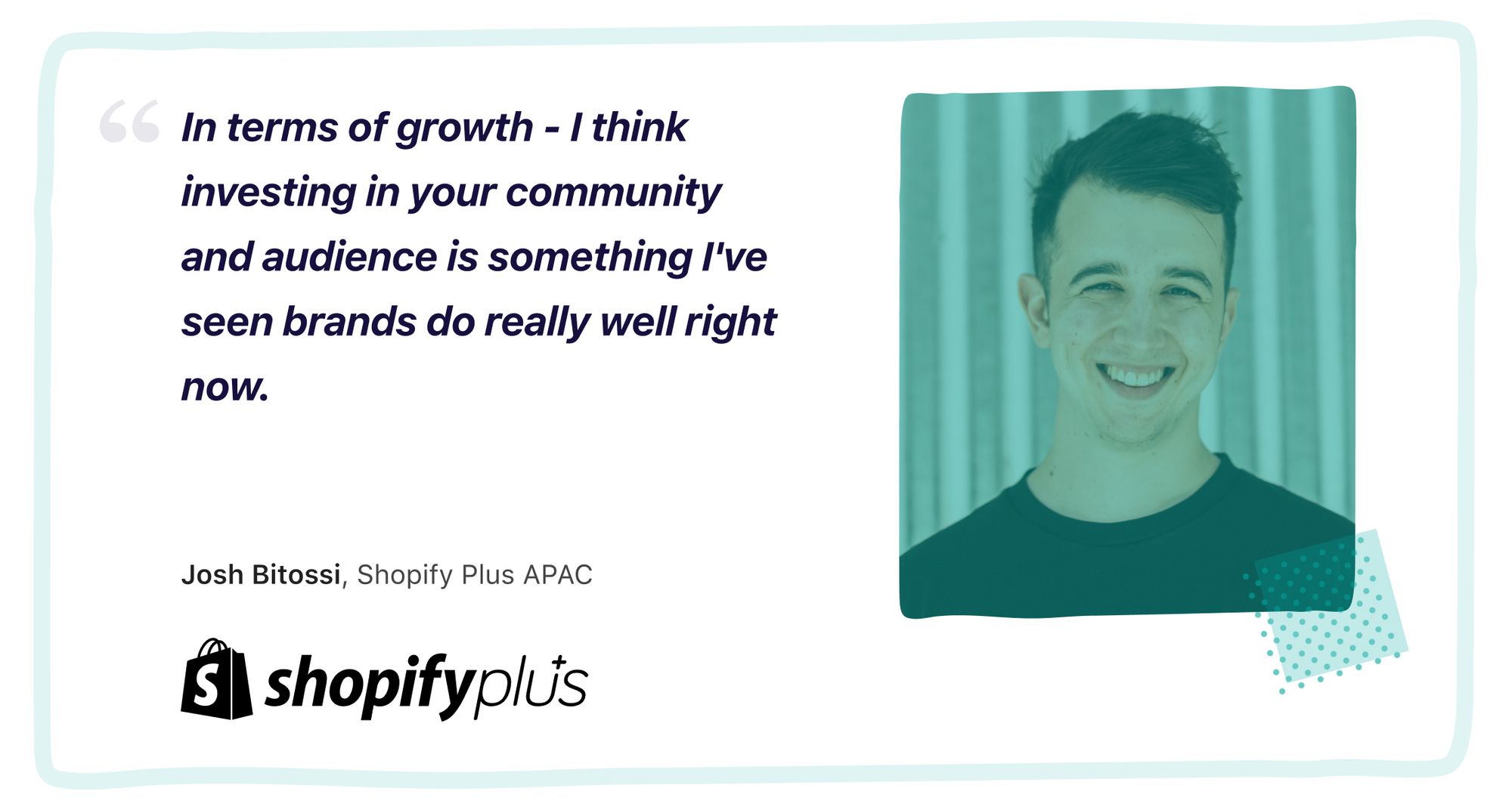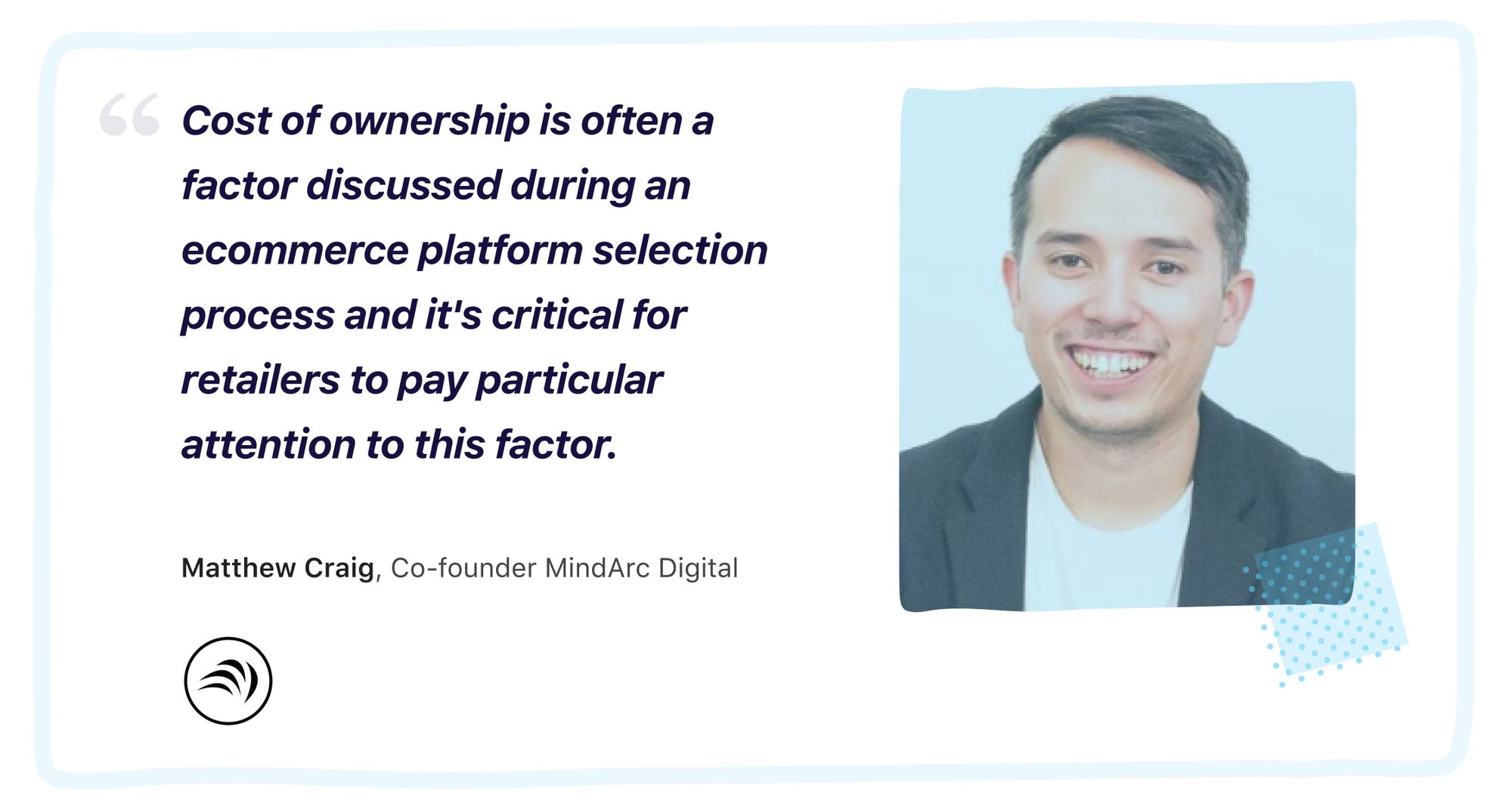25 Shopify Experts Reveal What's Next For 2020

It’s turning out to be a big year for ecommerce and the Shopify platform. Things are changing, fast. Keeping up with these rapid developments can be overwhelming.
We decided to ask leading experts about their opinions. Where is Shopify ecommerce going in 2020? Where does the innovation lie? What can we expect, which strategies will drive the most growth and what are the current ecommerce trends?
Our list of Shopify experts
1. Rhys Furner, Shopify Plus APAC
2. Kelly Vaughn, The Taproom Agency
3. Isaiah Bollinger, Trellis
4. Ben Zettler, Ecommerce Consultant
5. Lucas Walker, Gorgias
6. Rachel Jacobs, Ecommerce Partnerships
7. Dale Bertrand, Fire and Spark
8. James Lane, Full Fat Commerce
9. Paul Rogers, Vervaunt
10. Kate Collinson, Ecommerce Consultant
11. Adam Pearce, Blend Commerce
12. Martijn Wijsmuller, Ask Phill
13. Richard Emanuel, Parkfield Commerce
14. Jon MacDonald, The Good
15. Cassandra Ratcliffe, Shopify
16. Carl Hendy, Reddico
17. Sean Clanchy, Swanky
18. Laura Jackson, Overdose Digital
19. Craig Somerville, Reload Media
20. Iain Calvert, Ecommerce Consultant
21. Ben de Jonge, The Cut
22. Victoria Beal, Disco Labs
23. Matthew Steinbrecher, Reach
24. Josh Bitossi, Shopify Plus APAC
25. Matthew Craig, MindArc Digital
Rhys Furner, Shopify Plus APAC
2020 is the year that brought 2030 forward. We're seeing huge waves of innovation happen across pure play and omni-channel retailers. Brands who have invested in strong technical architecture that allows them to rapidly move around the consumer's needs are absolutely winning right now.
One particular area we're seeing as important is being flexible for your customers at a time when they need it. This means moving quickly to offer different ways your customers can buy from you. For example, click and collect, curbside pickup etc. We saw throughout April across Shopify merchants that POS revenue was down 71% but 94% of this lost revenue was made up online.
Consumers are willing to embrace different ways of buying things right now, so move quickly by ensuring you have good technology that allows you to adapt to the changing customer needs.
Rhys Furner is the Head of Partnerships & Sales Development for Asia-Pacific at Shopify Plus. Shopify Plus is built for high growth, high volume merchants. You can find Rhys on Twitter @Furnbagz.
Kelly Vaughn, The Taproom Agency
In 2020, with headless, multi-platform ecommerce continuing to thrive, rebuilding stores as progressive web apps (PWAs) becomes increasingly attractive to many of the developers working to future-proof their stores. PWAs allow them to combine the best of web and mobile apps and are generally more easy to deploy and maintain.
Shopify's continued expansion of the Storefront API gives developers a new set of tools to create a custom storefront at a significantly lower cost compared to what was required just a few years ago. Taking this a step further, we can utilize PWA platforms such as Nacelle to combine the headless experience with a fast-loading, cached Shopify storefront. With Nacelle, a lot of the heavy lifting is done for you, so all you need to do is concentrate on the front end build.
This isn’t to say that, as a Shopify merchant, opting for a PWA is the best choice, necessarily. It really depends on your store’s specific content needs, for instance. Especially those ecommerce businesses that need to integrate specific ERP or CRM systems will benefit from choosing to build a PWA.
While PWAs are an exciting new area of focus for developers, there are some potential downsides merchants should keep in mind before heading down this road. Your development tech stack needs to expand beyond typical Liquid builds, as PWAs tend to be built with either React or Vue, and ongoing development work for maintaining the site will increase as you won't be using Shopify Sections to let merchants maintain the data themselves. You won't be able to edit your Shopify theme from within the Theme Customizer because the storefront will live off of Shopify, which could create some friction for your team to make changes to the site.
Still, it is likely that we’ll see a lot of Shopify stores try a strategy of relaunching their mobile sites as a PWA in 2020.
Kelly Vaughn is CEO and Founder of The Taproom Agency. She also co-hosts the Commerce Tea podcast, discussing all things commerce, as well as the Ladybug podcast where she talks all things career and code.
Isaiah Bollinger, Trellis
International expansion is a big opportunity for many Shopify businesses. The larger plus stores are starting to grow into the 10s of millions and some even into the hundreds of millions per year in sales. I think more and more Shopify companies will see value in expanding overseas.
Launching a multi-store strategy, translation strategy, or many other tactics to help you expand international will be key. There are huge ad spend opportunities overseas in which the costs are not as high. Shipping and logistics is a hurdle but companies like Zonos can help with this.
As CEO of Trellis, Isaiah has extensive experience managing WordPress, Magento, and Shopify projects, custom web applications, third party integrations, and many different types of Internet marketing campaigns.
Through Isaiah's leadership, Trellis is a one of kind ecommerce solutions agency that is able to offer an entire technology and marketing solution from conception to healthy growth in online sales.
Ben Zettler, Ecommerce Consultant
The COVID-19 pandemic has completely turned both online and offline retail upside down… permanently. Every business, for better or for worse, has been affected by what's going on in the world and there is not a single client of mine that has been able to continue operating their business without some type of change to marketing messaging, website content, back-end operations/fulfillment, etc.
Reevaluation and experimentation will be the big trend of the second half of 2020 (and it's already started). Is your pricing correct? Can people afford what you sell? Do people want what you sell even if they can afford it? How can you repurpose the physical goods you hold in your inventory that people may not want in the form that you currently sell them? Is there a service you can offer that will enhance brand loyalty? Is there some type of cause marketing that you can engage on to get customers to think about you?
A lot of what I am talking about here is high-level and abstract, but necessary to think about. Every single business - no matter the industry - needs to operate under the assumption that what may have made you wildly successful before is not going to cut it in a post-COVID-19 world.
The companies that have been successful in the short-term life of the pandemic have been a lot of service-oriented businesses or companies whose physical goods can be enjoyed in the comfort of one's home. It remains to be seen how other types of businesses may survive and thrive as countries around the world begin to reopen.
Ben Zettler is an ecommerce, digital marketing and social media consultant who is a certified Shopify Expert and Shopify Plus Consulting Partner has worked with over 150 brands, athletes and public figures on optimizing their ecommerce and digital marketing strategies.
Among other startup and enterprise-level companies, his list of clients includes Bleacher Report, luxury fashion brand Marchesa, MLB's All-Time Saves leader and first unanimous Hall of Fame inductee Mariano Rivera, NFL All-Pro cornerback Jalen Ramsey, Hollywood makeup stylist Fiona Stiles and renowned custom sneaker artist Kickasso.
Lucas Walker, Gorgias
Stellar customer support experiences aren't just a nice to have for modern ecommerce businesses; they're a must have.
When ecommerce volume grew in two months equal to what it had grown over the past ten years, the world embraced ecommerce virtually overnight.
The businesses that thrived were able to adapt and give customers that offline experience. This might be jumping on a Facetime call to show off furniture, or asking questions about products, in real-time, through text messaging.
In 2020, more than ever before, brands that offer service where and when their customers want to buy, will be the ones that have an opportunity to expand overnight.
Lucas Walker is a partner manager and content marketer at Gorgias and a serial entrepreneur. Having cofounded Venngage, an infographic maker, and Treats Happen, an ecommerce first natural dog treat company.
Today, 2500 Ecommerce stores including MVMT, Timbuk2 and Steve Madden use Gorgias to power their customer service. Lucas lives in Toronto, and is a huge fan of bikes, the Blue Jays, and burritos. Get a demo of Gorgias here.
Rachel Jacobs, Ecommerce Partnerships
COVID-19 has hit the retail industry hard whilst simultaneously catapulting ecommerce forward. Over the last few years, ecommerce saw a huge move towards internationalisation but the recent crisis has made it clear that shopping local is increasingly important for consumers. Ecommerce platform giants Shopify are constantly innovating and adapting to the needs of online sellers and consumers.
Recent announcements from Shopify re(unite) included a range of features that makes moving a traditional brick and mortar business online easier than ever, further facilitating consumers demand to support their local high street. And with 45% of spend coming from new customers, I predict that 2020 will see a huge increase in consumers choosing to shop local, even if that means spending a bit more money.
Overall, 2020 will be the year for ecommerce businesses (brands, technologies and agencies) to better understand who their ideal customer is and how they can help them best. By understanding their ideal customer it enables businesses to communicate how valuable they are and therefore attract more of their ideal customer.
So, where does that leave agencies that are helping brands grow at a time of uncertainty? Agencies will need to ensure they have solid omni-channel strategies in place and partnerships with omni-channel technologies suited to the needs of their ideal customer. If I could give any advice to ecommerce agencies, I'd suggest they firm up their omni-channel strategy, immediately communicate that to their existing clients and ensure their website messaging effectively communicates their value proposition.
Rachel Jacobs, ecommerce agency expert, is founder of Ecommerce Partnerships. With experience running a leading Shopify Plus agency, Rachel has been there, done it and has the virtual war wounds to prove it. Working with ecommerce agencies across the globe, she helps them counteract over-servicing and scale profitability by introducing processes and systems to increase the lifetime value of their clients.
Dale Bertrand, Fire and Spark
Organic traffic is more valuable than ever. But, stiff competition, evolving search engine algorithms and falling click-through-rates on organic search results are forcing brands to overhaul their ecommerce SEO strategies. Brands need to adapt. We discovered that building authority, keyword selection that balances purchase intent with competition considerations and a very limited set of technical optimizations currently move the needle on organic traffic. Some brands are well positioned to take advantage of these SEO strategies and some, frankly, should invest elsewhere.
Technical SEO doesn’t work anymore for ecommerce. Google is too good at finding the best pages on the web for queries regardless of how well your pages are optimized. This means you’ve got to focus on publishing useful pages that are the best Google can find in your category. Expand your product page keywords by brainstorming the how, why, where and when for products. Target high value keywords by generating targeted collection pages with useful content. Avoid wasting time writing blog articles that target low converting informational keywords.
It’s hard to rank nowadays without authority and the best way to increase your authority is backlinks. If you don’t have established sites linking to you, you aren’t going to rank well. The problem, of course, is that backlinks are hard to obtain. You’ve got to create awesome content or do something remarkable to earn backlinks. SEO works best when your other marketing efforts are generating visibility that creates backlinks. This could take many forms, including press mentions, product reviews, charity partners, gift guides or blog write-ups. And, no, backlinks in social media posts do not directly benefit your SEO.
Dale Bertrand runs Fire&Spark, an ecommerce marketing agency that specializes in quantitative assessments of ecommerce SEO campaigns to determine whether brands should double-down or bail on SEO. They have worked with Fortune 500 companies and venture-backed startups around the world for two decades.
Their clients include global brands such as Citizen Watch, Ministry of Supply, Makerbot, Raymond Weil and Bulova. Dale applies his graduate school work in artificial intelligence to search engine marketing. Dale speaks at industry conferences and leads corporate training events. He has trained marketing professionals from TripAdvisor, Microsoft, HubSpot, Digitas, and Proctor & Gamble. Dale has BS and MS degrees in Computer Engineering from Brown University.
James Lane, Full Fat Commerce
In 2020, one area we are going to see huge growth is in click-and-collect or 'curbside pickup'. In fact, US click-and-collect ecommerce sales will jump 60.4% to $58.52 billion in 2020. This can obviously be partly attributed to COVID-19, and the fact that people are no longer able to sit inside their favourite restaurants or visit their favourite retail stores, but it also seems to be a trend that will outlive the pandemic.
This, combined with Shopify's newly announced improved local delivery, will open up more opportunities for local businesses and retailers to serve their customers however they want to be served.
Additionally, it could also allow them to compete with Amazon on shipping times. More than ever, customers want to support new business, but they also want next day delivery. So if somebody has a choice between ordering from a local retailer, or ordering from Amazon, and the local retailer will deliver the next day or even the same day, why would they ever choose Amazon?
As the Founder of Full Fat Commerce, James Lane works with clients around the world ranging from pre-revenue start-ups to international brands on designing, building, and growing their businesses on Shopify.
Paul Rogers, Vervaunt
Given everything that's happened recently, there seems to be a huge focus on getting more value out of online channels and really pushing DTC growth. Even now, we've already seen some of the brands we work with, that would've previously been ~80% wholesale, re-allocating budgets and looking to really focus on CX, CRM and new customer acquisition, which I think will be the trend. I've heard several of these types of retailers (long-standing, premium brands) talk about emulating DTC, digitally native companies, which is crazy really.
In terms of strategies - I think CRM and specifically bringing customers back more regularly is a big one, I've already seen a bit of a trend around retailers looking to build subscription offerings, with this representing a really good opportunity to drive more revenue from regular customers. I've also had a few conversations about loyalty, with a view to using different approaches to encourage more frequent purchasing - I think this will be another big trend in DTC ecommerce (or even bigger than it already is). Both of these are getting a lot of traction at the moment and will continue to grow.
The other one is then just creating a best-in-class, customer experience - I think it's more important now to have a really strong UX and also more considered comms etc. Most markets are getting more competitive as a result of companies going to DTC and re-focusing attention on DTC, so this is something that will be a key investment area.
Paul Rogers is an experienced Ecommerce Consultant who focuses primarily on replatforming projects (platform selection, BA work and solutions support) and customer experience. Paul also runs a London-based ecommerce consultancy called Vervaunt.
Kate Collinson, Ecommerce Consultant
As 2020 sees online advertising costs rise and price-competitive marketplaces like Amazon continue to grow, direct-to-consumer ecommerce stores are under threat. Those who are still making a killing online are those who are winning the hearts and minds of their customers. They're listening to what their customers want, positioning themselves in a unique way and investing in content creation that resonates.
Investing in brand identity - both visual and voice - is going to be more important than ever for online growth that’s sustainable. It doesn’t matter if you currently have a great advertising return on ad spend or a strong email list - customers will always seek the best deal, but they’ll be loyal to strong brands. Your identity needs to be articulated across every customer touchpoint including homepage, email, product descriptions, social media, advertising - even down to your order confirmation email.
A few of my personal favourites include Away Travel, the memo, Nimble Activewear and Go-To Skincare. They’re exciting and engaging, but most importantly, the strength of what they’ve built means they own their primary sales channels and aren’t exposed to the volatility of marketplaces or wholesale. Study them, but whatever you do, don’t copy them - invest in defining your brand.
Kate Collinson is an ecommerce and growth marketing consultant specialising in Shopify and Shopify Plus. She focuses on using data and insights to identify opportunities for ecommerce brands to grow online. You can find her at katecollinson.com.
Adam Pearce, Blend Commerce
Subscription and recurring purchase options have exploded throughout the COVID-19 pandemic. Research by Recharge shows that 57% of consumers choose a monthly subscription model when offered. This shows the great opportunity that Shopify brands have to lock in cash flow.
Many Shopify brands overlook the use of subscriptions and subscribe and save options, as they feel this is better suited to the food and drink verticals. Having worked with pet supply, clothing, accessories and beauty products we’ve seen first hand how this can increase MRR substantially. From our own experience and from research from Recharge, we also know that by implementing a subscription or subscribe and save option that AOV can be increased over time when offering additional upsells each month.
With so many consumers now switching from big-box stores and Amazon, now is the time to take advantage of this buying behaviour.
Adam Pearce is the co-founder and CEO of Blend Commerce, a Shopify agency that specialises in growing DTC Shopify brands. Blend works with a wide range of DTC brands that need strategic guidance and tactical implementation for Shopify design, development, and marketing projects.
Martijn Wijsmuller, Ask Phill
Creating a successful D2C strategy for your brand has become one of the most important topics for many brands worldwide, especially after we've seen how vulnerable a traditional retail strategy can be.
We have seen a shift from ecommerce being a supportive channel for the retail to ecommerce as main focus and retail in a more supporting role. An important element of a successful D2C strategy is having a content-rich digital flagship store telling everything the consumer should know about your brand. This global brand story should be delivered in a localized manner where localized language and payments are key. In order to efficiently achieve this, we advise our clients to build a headless ecommerce platform based on Shopify.
We've seen first hand that creating such a digital flagship store requires a lot from your ecommerce platform and in some cases using the "traditional" setup of Shopify is not sufficient. We've seen that our merchants who are selling internationally run into scaling challenges with Shopify in the field of multi-language storefronts, performance and URL & SEO structures. This is why we build headless ecommerce platforms where we combine Shopify (the best in class for ecommerce) with Contentful (the best in class for content management) and a headless front-end based on Gatsby (a framework based on React creating static webpages and as a result creating higher performing websites).
We expect that more and more brands will recognize that this more advanced way of utilizing Shopify's ecommerce system ensures that your brand stays ahead of the competition. If you are facing similar challenges with your platform consider going headless.
Martijn Wijsmuller is the co-founder of Ask Phill, A Shopify Plus agency specialized in building headless ecommerce platforms for D2C brands in the Fashion, Lifestyle and Beauty industries. Ask Phill is the leading headless Shopify integration partner and organiser of the D2C Summit in Amsterdam.
Richard Emanuel, Parkfield Commerce
COVID has sped up the adoption of shopping online and brought the future closer to us. Because of this, bringing a human connection to sites/UX is going to be even more important. The next evolution and challenge for brands is how they bring this physical shopping experience into the home through video, live chats, live streams and classes.
I’ve seen beauty brands do extremely well with booking appointments and having live video calls. Another brand had set up live tutorial courses. In China, live shopping streams with influencers are massively popular. One of my clients built their success, where the owner of the store would interact with customers queries: hard to scale, but they ensured that this human connection was part of their growth.
One of the notable mentions for Shopify’s COVID app challenge was the Appointments and Bookings app.
Richard Emanuel is co-founder of Parkfield Commerce, a Shopify Plus Agency that specializes in helping B2B brands scale their online DTC operation.
There are several great alternatives to Shopify, like WooCommerce, BigCommerce, and Wix. Read more on Shopify alternatives.
Jon MacDonald, The Good
Based on The Good's ecommerce impact survey results (May 2020) it is clear that the future of retail is in ecommerce – even more so post-COVID. Of those who responded, brands that are flourishing, and expect to keep growing, share the common plan to spend more on marketing their business in 2020 than they did in 2019. For those brands, the most effective use of this increased spend is proving to be customer experience optimization, such as ensuring the path to purchase is as easy as possible.
This CX optimization effort should be evaluated at every step of the customer's path to purchase. Just to name a few, this can include:
- Landing page messaging and first impressions
- Wayfinding and navigation
- Product research, search, and category distinction
- Product details and supporting content
- Reassurance tools such as social proof and guarantees
- Shipping options, including a free option
- Clear checkout and payment options
- Post-purchase follow-up and expectation setting
All of these align around the only two goals of online shoppers:
1. To research and find the product that solves their pain or need, and...
2. To convert, as quickly and easily as possible, then get back to their daily lives
If you want to win in ecommerce in 2020, you need to win at making those two goals as easy as possible to complete in your customer experience. As the number of ecommerce stores continues to grow rapidly post-COVID, having an optimized customer experience is one of the only competitive advantages left.
Jon MacDonald is founder of The Good, a conversion rate optimization firm that has achieved results for some of the largest online brands including Adobe, Nike, Xerox, The Economist, and more. He regularly contributes content on conversion optimization to publications like Entrepreneur and Inc. He knows how to get visitors to take action.
Cassandra Ratcliffe, Shopify
As a community manager at Shopify, COVID-19 has brought up many changes, but community remains the same. Whether it’s in person or digital, fostering relationships will always have a strong return on investment.
Pre-COVID community looked like in-person gatherings. Once that was no longer an option, we had to revisit our playbook. There were already tons of great examples of digital engagement to inspire us. We didn’t take long to adapt.
As a business, whether you are freelancer, brick and mortar or ecommerce only, supporting your local community is crucial right now.
Don't let a busy schedule hold you back from engaging your local community. Support can vary from donations, offering education, virtual events or even a simple chat when someone needs it.
Ultimately, people and businesses need each other.
One thing I often share with the businesses I work with is that while community is a long play it’s not one to be ignored. The phrase “We are all in this together” has rung true for me through these last months. I hope it can act as a catalyst for you to connect with someone new, as well.
If you don’t know where to start, reach out and let's chat!
Cassandra Ratcliffe is currently building community as the Shopify Community Manager in Vancouver and the Sea to Sky region. From in-person workshops, large-scale events, 1:1 meetings and now moving online to offer virtual events, Cassandra loves building relationships and putting her marketing and ecommerce background to good use helping local businesses grow.
Carl Hendy, Reddico
I am going to answer from an organic channel perspective. Online retailers will need to ensure their content works more for them and for that to happen more attention detail will be required. Most large ecommerce websites need to go on a diet. They need to be trimming back the dead content, improving the stale content and clearing out content cannibalisation issues. Create content that matches users intent and questions they may have.
We have seen paid search advertising pulled back during Covid-19 which has pushed the spotlight on retailers driving traffic through organic search results. Google then announced that retailers can advertise in the Google Shopping tab for free (it was free once upon a time), increasing the spotlight on organic traffic acquisition and sales.
More recently Shopify and Facebook have announced they are partnering together to help merchants create a customized online storefront for Facebook and Instagram.
All the big marketplaces are innovating new ways to show products for sale across their platforms and surfaces, this opens up a new opportunity for optimising for those surfaces and increasing exposure of products and store revenue.
Carl Hendy is co-owner of Reddico SEO agency and can often be found talking all things ecommerce and SEO on his Twitter.
Sean Clanchy, Swanky
I talk about it to such an extent I drive my colleagues and clients to distraction but CRO (and experimentation generally) and prioritisation of effort are my two tips for businesses to prosper in a COVID-19 impacted market.
For those businesses with underperforming audiences - experiment and find out what resonates for customers. Their buying needs (or perceived needs) are different now. You will drive additional revenue, improved ROAS and ultimately profitability if you have a commercially prioritised, test and learn roadmap. And you will be able to adopt those learnings on site, through your outbound acquisition marketing and at times - it will even inform your product development.
So far this year, our data driven testing roadmap has led us to run experiments that have identified as much as 70% improvement in YoY revenue for an 8 figure brand (and there's a lot of the year to go!).
We are seeing trends towards patriotic purchase patterns (Shop local initiatives) driving great results. Gender and age based segmentation and personalisation, personalised product recommendations (based on weather, gender, historical purchase patterns and leveraging CRM data) being very impactful. With SaaS tools like DynamicYield and VWO becoming more attainable for SMEs and a lot of larger businesses pausing consulting engagements - it is easier for the "up and comers" to get ahead quickly and iterate faster than the "Big Boys" in the short term.
And as far as prioritisation... COVID-19 for a lot of business owners feels like the sky is falling. "What's next?" "I didn't see that coming..." "Oh crap, now my logistics/ROAS/conversion rate are stalled/dropping/flat as a tack". When everything is in a state of flux you need to take control of what you can. Understand what you do know about your business, realise your capabilities be they personnel, budget or time and allocate them based on a priority matrix.
I'm a big fan of ICE in helping prioritise effort. Whether they be for CRO test prioritisation, marketing campaigns, development roadmaps or internal, back of house initiatives. Spend time, effort and money... On what will make you money and have a logic based mechanism to take arbitrary decision making out of the equation.
Sean Clanchy is the Managing Director of Shopify Plus Expert agency Swanky's Australian operation. Known for their CRO, design and development skills - his team specialise in quickly turning around failing or flailing businesses, and scaling fast growth merchants while adding process and... prioritisation. His team helped brands like Huel, BodaSkins, Needle and Thread, Saltrock Surfwear, Friction Free Shaving, Olivia Von Halle, Greg Norman and Schwarzkopf.
Laura Jackson, Overdose Digital
If we discussed the commerce landscape in January 2020, the advice and commentary would be quite different to June 2020. COVID-19 has no doubt changed the landscape significantly. SaaS platforms - and clear leaders of that, Shopify - are offering a quick to market solution for many businesses that once skewed to a traditional omni-channel approach but have now been hindered by isolation and social distancing.
I think the ‘Local Delivery' feature quietly rolled out a few weeks ago is a game changer for contact conscious communities who still want to support local businesses without extensive times outdoors - it’s something we have already implemented on two clients’ stores - and most powerfully, it does not need development support to activate. Features such as this should enhance the online to offline experience as isolation continues to relax.
One thing online stores of any business size need to continue to focus on is not complicating the SaaS platform and tools, instead using them for their simplicity and power. Your email automation, social stores, loyalty and post-purchase engagement messaging is essential to get working smart, not hard - think of a simple effort-versus-impact approach when assessing changes to stack, frontend of UX.
Creating simple activation points and continually reviewing and refining based on data will be time well spent to deliver revenue growth. No doubt, a continued roadmap of new features enhances and provides solutions to more business requirements. However, executing a simple to deliver customer-centric experience, with a light operational time investment, gives business owners and teams the best chance to achieve profitability and success.
Laura Jackson has 13 years experience in the commerce, digital marketing and advertising industry. DO Commerce joined the Overdose Digital family in July 2018. As Managing Director Melbourne, Laura is excited to lead the team of 34 talented professionals. She views her mandate as contributing positively to the development of the team, while building strong client relationships that deliver value and growth to their commerce environment. Agency culture and client relationships underpin her entire approach to running a business.
Craig Somerville, Reload Media
2020 has accelerated omni-channel retail like no year before it. Online as a percentage of retail has been slowly climbing for a decade, and in the space of eight weeks, accelerated to levels not expected for another five years or more. It’s tempting to therefore think that this will be the only major change of 2020, that online will take a much bigger share of the total retail pie moving forward.
But more than that, the lasting impact may actually be how it’s changed the way consumers buy goods across a range of categories, and put even more pressure on retailers to have a true omni-channel offering. Behaviours like kerbside pickup or “click and collect” have accelerated, as has usage of self-serve checkouts, and other “no touch” delivery options on everything from pizza to hardware. Consumers nervous about avoiding crowds are checking opening hours online, live wait times, stock availability, booking appointments and more before heading in-store, and those retailers who have adapted have managed to retain existing customers and attract new ones.
And whilst some of these behaviours might not be needed once the COVID-crisis recedes (like checking the ‘busyness’ of my supermarket before going), the routines picked up will flow into other industries (for example hospitality) or other types of retailers as awareness of these capabilities grows. Retailers should be planning for increased expectations across a range of these omni-channel offerings in the years to come.
Shopping will continue to become more and more omni-channel; across devices, across platforms, across social networks, online and in-store. Consumers will expect to be able to seamlessly switch between them all, with their preferences, history and profile moving with them. None of this is new, it’s just that the future of omni-channel retail has been brought forward by about five years.
Craig Somerville is Managing Director of digital marketing agency Reload Media, a multi-national agency with offices in London, Brisbane and Manila. Craig’s worked with some of the world’s leading ecommerce and retail brands on all aspects of their digital marketing, and is a regular industry speaker at events such as Online Retailer and Shopify Unite. Follow him on Twitter.
Iain Calvert, Ecommerce Consultant
In 2020, it's tempting to look to the newest thing in ecommerce for the silver bullet of increasing sales. For example, it would be easy to say TikTok is exploding, you should be on there. However, the reality is the most successful ecommerce stores make really good products a specific group of customers love. The ones that fail and don't grow just copy or are always chasing the next big thing, focused on tricks not addressing the core issue.
The most profitable ecommerce stores (remember growth and profit aren't the same thing) manufacture the product and sell it directly, and keep a Gross Margin (profit after they have paid for the product) above 50%. These tend to be Direct To Consumer brands. I personally see this as the biggest area of growth in ecommerce, as it's now much easier to cut out the middleman, like a retailer and just sell direct.
Another trend that isn't going away and is the common factor with many successful ecommerce stores is they have a strong identity and clear message (often called brand, but this term can be easily confused with a logo). The product they sell says something about the person who buys it.
If an ecommerce business has all the above then finding the right mix of marketing channels, paid social, SEO, email Google ads, influencers etc will help accelerate the sales and get the growth. There is no one size fits all here, it is a case of trying them and finding the right mix.
Iain Calvert has worked in ecommerce since 2003 on brands such as Billabong, Quiksilver and Super Cheap Auto. He now works with a handful of ecommerce brands to help them grow profitably. More ecommerce tips on his website.
Ben de Jonge, The Cut
2020. No one predicted this, except Bill Gates. 2020 has forced everyone to change everything. Be grateful to be in ecommerce, a sector that has experienced growth and innovation thanks to COVID-19.
So, where to now?
With more people shopping online and more businesses and products to choose from, brand and customer experience stays central to ecommerce success. The businesses that boom will be the ones that cut through and show that they understand their customers, and how they can help.
While physical stores become fewer, online stores must offer carefully considered, customer-centric experiences from the home page to delivery, and everywhere in between. That means strong, relevant branding - Name, logo, colours, imagery, language, and getting them right for the ideal customer.
Ecommerce will always be brand + technology. The ‘headless’ multi-platform, multi-channel approach will continue to grow, because it offers more ways to reach more customers. Segmented, targeted and automated engagement will stay strong - email, SMS, messaging - because it reaches customers where they are, right now.
Good luck, stay safe, and enjoy the ride.
Ben de Jonge is Co-founder and Director of ecommerce and brand agency, The Cut. From Perth, these Shopify specialists help businesses design stronger, ecomm-specific branding and communications to build engagement, optimise customer experience and increase sales conversions.
Victoria Beal, Disco Labs
Ecommerce businesses have increasingly pivoted to a subscription model over the last five years to build recurring revenue. But as more brands and verticals begin to offer subscriptions, it is important they are implementing the offering in the robust and elegant way that customers have come to expect. Switching on subscriptions without assessing the impact on your customer's experience leaves the approach feeling "bolted on" rather than providing real value.
Customers are looking for efficiency and flexibility in the way they manage their subscriptions - from Netflix to coffee beans and everything in between. Particularly relevant now with COVID-19 impacting people's routines and locations, people need to receive orders to home instead of work, they may need their order more frequently now that they are staying home, or they may be reassessing financial decisions and pausing unnecessary purchases. Customers expect their memberships and subscriptions to be a self service experience, so it's vitally important to enable them to skip, pause, and cancel their subscription items on a granular level.
For businesses that may not have a product or service that fits the traditional subscription model, recurring revenue can be driven from loyalty and membership programs. Brands like Sephora offer their repeat customers a paid membership, which entitles them to free shipping and access to exclusive products - a great example of inspiring loyalty and increasing the lifetime value of a customer. During the COVID-19 crisis, we've seen a huge lift in exercise and wellness companies offering a similar membership program, filling the gap for regular gym goers by providing them with guided training and health resources.
For any businesses assessing whether a subscription or membership offering is improving or impacting their customer experience, it's best to start with treating the recurring offering as a sales channel that requires the same UX focus as they would give their Shopify theme. Mapping out the initial order experience, the communications & notifications, the account admin interface etc will ensure your approach is as elegant as possible, whilst enabling you to start thinking about what's next on your roadmap. Growth plans for subscriptions are just as important as growth plans for collections or product ranges, so finding out how your customers are engaging with your site and what they see value in will empower you to design levelled up offerings like subscription product upsells and referral programs.
As the Business Director at Disco Labs, Victoria Beal has worked with merchants growing their businesses from scratch and with global brands scaling to the next level. Disco Labs is a global leader in custom software and enterprise solutions for merchants using Shopify Plus. Before online retail, she spent 10 years in the arts industry and still works in casting outreach and arts journalism today.
Matthew Steinbrecher, Reach
Cross-border ecommerce is bigger than ever. With the pandemic causing ecommerce technology and revenue to explode years ahead of previous projections, innovation within the industry is key. Consumers are becoming more savvy with their purchasing expectations, buying behaviors are changing rapidly, and consumers have many more brands to shop from with the digital migration.
It is imperative for businesses to enhance the purchasing experiences on their online stores to compete with the likes of Amazon. A key focus should be boosting infrastructure for essential pillars of their business like payment processing and shipping solutions. Offering local currencies, preferred payment methods, and duty tax calculations within your native checkout is crucial for offering a transparent shopping journey to a global audience.
Matthew Steinbrecher is the VP of Platforms & Partnerships at Reach, a cross-border payments platform. Reach helps merchants grow their global sales by offering best practices in global payments and checkout experiences. Contact Matthew on LinkedIn for a free audit of your brand's international experience.
Josh Bitossi, Shopify Plus APAC
“There are decades where weeks happen and weeks where decades happen" - I think that's the best way to sum up 2020 so far. Every day is a new challenge that puts us on a different trajectory and I don't think anyone can say with certainty where we'll be at the end of this year.
What we can say - the businesses that ignored online or other non-brick and mortar channels are struggling or having to move fast. Those that are moving fast are pushing platforms like Shopify into really interesting areas that we wouldn't have experienced this quickly otherwise. They're looking at what they need to implement now (curbside pickup, online to offline, and remote culture internally) and how those things can help them come out of this even stronger.
We've already been in this for months, which means the habits around how people buy are changing and it's not going to just flip back overnight. So brands need to move quickly and take these new expectations in their stride.
In terms of growth - I think investing in your community and audience is something I've seen brands do really well right now. Don't rely on any channel, but instead build up regular communication with customers - whether that's a Facebook group, over email, or just website updates. Look at how brands like Gymshark have changed their messaging and even product photos. Use your website to make it incredibly easy for them to get the information they need regardless of where or how they're shopping, and build up a relationship that isn't dependent on any single channel.
Josh Bitossi is a Launch Architect with Shopify Plus, where he helps some of APAC's largest merchants onboard and thrive online.
Matthew Craig, MindArc Digital
It's been a rollercoaster since COVID-19 first started impacting the global retail world. At MindArc we’ve had the opportunity to interact with many different retailers who were impacted by the social changes occurring in different ways and witnessed how businesses have been forced to react to the changing way of life.
In the last few years there has been a trend for retailers to move towards modern cloud-based ecommerce platforms that require less on-going maintenance, and less investment into infrastructure upkeep. This enables them to focus on marketing and growth initiatives. In today’s market, we see Shopify as a leader amongst the modern ecommerce platforms, with a clear focus on innovation. They are enabling merchants for growth and equipping them with the right tools for success. Shopify’s recent partnership with Facebook (FB x Shopify) is just another example of the multitude of opportunities brands can access on the platform.
Cost of ownership is often a factor discussed during an ecommerce platform selection process and it's critical for retailers to pay particular attention to this factor. Understanding not only the direct financial cost of ownership but also the realistic manpower footprint for you and your staff that some of the platforms out there require to manage and maintain is critical. From my experience this is often a hidden cost.
Matthew Craig is the co-founder of MindArc Digital, an ecommerce agency based in Sydney. They specialise in Shopify Plus implementations, Custom Apps and Integrations, and ecommerce strategy for retailers. Matt is passionate about helping merchants find the right platform to unlock growth.
P.s. If you sell on Shopify too, try POP's All-in-One Chat Marketing integration for your store to boost sales with abandoned cart messages and much more.
Interested in participating in articles like these? Send an email to hello@shoppop.com.
Or why don't you connect with POP directly through Messenger at https://m.me/shoppophq
